
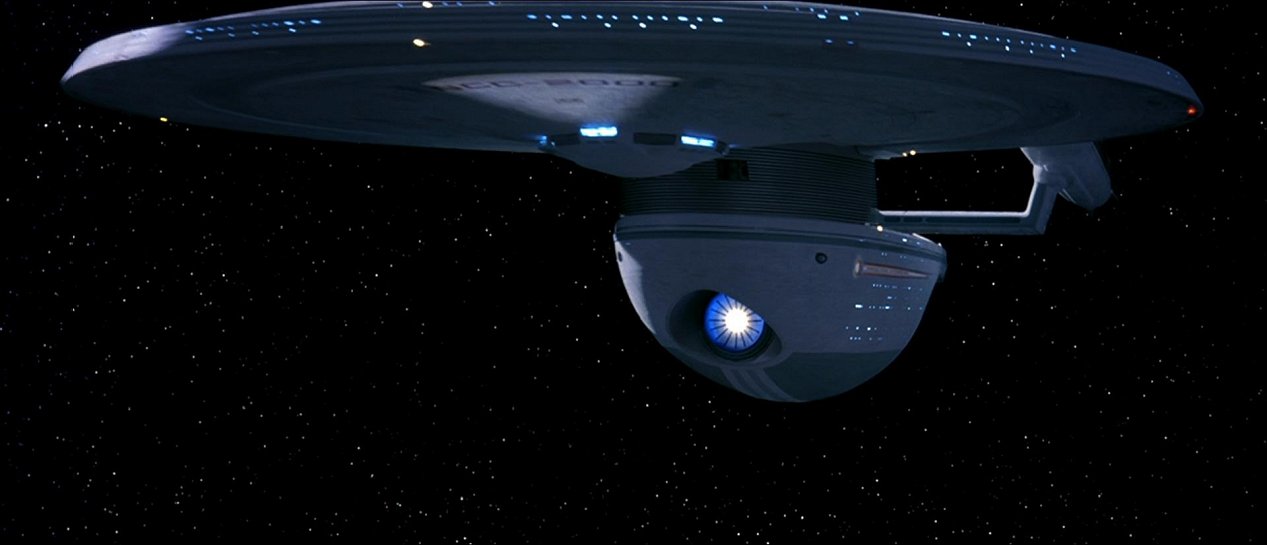
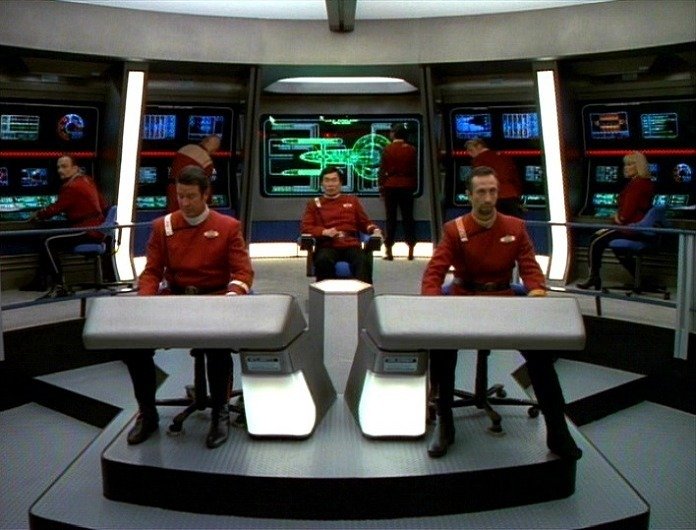 U.S.S. Excelsior, launched 2284 and commissioned stardate 8105.5 at San Francisco orbital fleet yards. Test bed for transwarp drive and other systems for five years between 2285 and 2290. Commissioned as a frontline starship on stardate 8921.5, Excelsior has currently undergone two missions [2287 - 90; 2290 - 2293] and is about to start her third mission.
U.S.S. Excelsior, launched 2284 and commissioned stardate 8105.5 at San Francisco orbital fleet yards. Test bed for transwarp drive and other systems for five years between 2285 and 2290. Commissioned as a frontline starship on stardate 8921.5, Excelsior has currently undergone two missions [2287 - 90; 2290 - 2293] and is about to start her third mission.
Excelsior is commanded by Captain Hikaru Sulu, a veteran starfleet officer from the famous five-year mission of the U.S.S. Enterprise 1701. Excelsior has a crew of 510, ranging in experience from Captain Sulu to cadets on their first starship assignment. Commander Dmitri Masoud Valtane is the First Officer of the Excelsior, with Lieutenant Commander Rand as Second Officer. Lieutenant Commander Saavik returns to the fold as the Chief Science Officer aboard. Lieutenant Commander Lojur and Ensign Tuvok are amongst those who remain onboard from the previous mission.
Excelsior is one of two starships considered to be the flagship of the fleet, the other being Titan NCC-1777, Shangri-La class under Captain Saavik. Excelsior gets used for a large number of high profile missions, 'showing the flag' for the Federation. U.S.S. Excelsior also has some of the finest Starfleet personnel onboard as her crew, some would go as far as to argue that they are the finest crew currently in the Starfleet. The mission that commenced in 2293 was one of the defining moments for the formation of New Starfleet and its direction in the opening part of the coming century. After the three year mission that had culminated in the explosive shockwave from Praxis and the Battle of Khitomer, Sulu was determined to have a crew and starship that was ready to deal with the aftermath.
In 2294 there needed to be an active attempt to keep the momentum going from Khitomer. There needed to be engagement by Starfleet to keep the dialogue going and to continue dialogue with the Klingon Empire. Sulu sought to meet up with the Klingon commanders he knew best from his days on the Enterprise: Korrd, Klaa, Kang, Kor and Koloth. Korrd was still the old General, out of touch with his younger successors. Klaa was the youthful, aggressive, eager young captain bucking for bigger warships and fleets to command; dreaming of his great House in the Empire. Kang was where Sulu saw something else. Kang had changed since his last encounter, becoming darker and murderous. His heart was on a path of vengeance for the death of his son, a fate of the sons of Kor and Koloth too. Sulu was to find that this act would have consequences reaching far further than he could imagine. Kor took the death of his son in a far different way. Kor was an alcoholic. A drunken ruin of the great captain that he'd been back at the standoff over Organia. This giant of a Klingon commander had become an empty, cruel shell, filled only with bloodwine and venom. Sparks of genius were still visible under the haze of alcohol, but the damage had been done. Koloth seemed to be the same aristocratic, high-born Klingon. Leader of a great House of the Empire and master of all his surveyed. Like Kang, he was seekig out the murderer of his son, but this wasn't blinding him to the future of his House an his own destiny. He spoke of how he had seen friends fall from grace; friends like General Chang were now discommended and their lands handed out like gifts to loyal Houses. Koloth had seen how the Praxis explosion had brought the Empire low; how a Vulcan had asked their Chancellor to meet them, only for humans to murder him. Yet, now humans were treated by the daughter of Gorkon as the potential savious of Qo'noS. Koloth reminded Sulu that humans had only humiliated him. The tribbles beamed onto his warship Gr'oth after the disasterous K-7 mission; more tribbles beamed onto his warship on the next encounter with the Enterprise. Whilst Kirk and his crew had chuckled about the incident, Koloth was shamed. Now the world and Empire he had grown up in to expand, now lay cowed down by Praxis and its carcass pecked over by the Federation in the guise of rendering aid. Sulu thought Koloth a bitter old commander remembering days of past glory. Sulu was wrong.
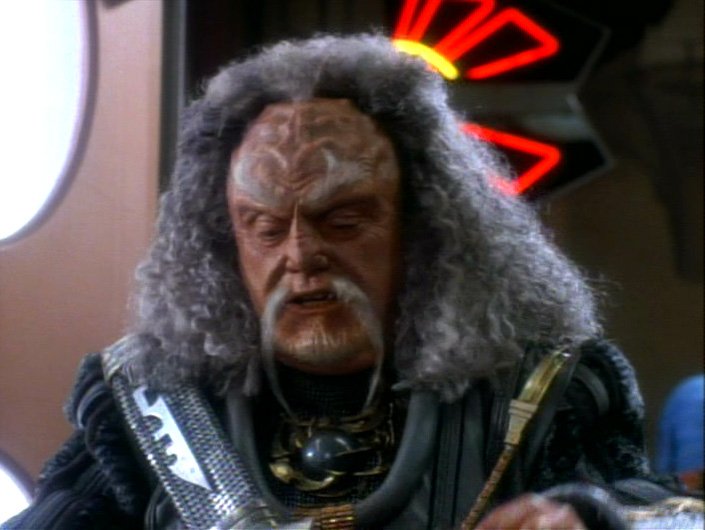 It didn't take long for the death of Gorkon and the naming of his daughter Azetbur as Chancellor for the Empire to start to crumble. Sulu and the Execelsior crew had met Harcourt Fenton Mudd (junior) working with the Orion Syndicate to bring the blackmarket to the Klingon Empire, as well as selling off some of the products of the Empire for a small profit. The world of Ch'ramak is where the Excelsior had witnessed both the disintergration on the Klingon Empire and the ferocity of the fight-back to save it. It was soon apparent that there was a loss of prestige in the Imperial Klingon Navy as the fragmenting High Council was pulling resources in different directions to both rebuild the home world and also empower rising Houses. The result of this was a Klingon war fleet that couldn't subdue rebelling farmers, who are evolving into something far more dangerous over time. The words of Koloth came back to Sulu as he realised that the explosion of Praxis had exposed a more insidious collapse within the Klingon Empire. Worse was to come. News followed from the Klingon home world; there had been a military coup and Chancellor Azetbur had been overthrown. Probably killed. Her successor was none other than General Koloth.
It didn't take long for the death of Gorkon and the naming of his daughter Azetbur as Chancellor for the Empire to start to crumble. Sulu and the Execelsior crew had met Harcourt Fenton Mudd (junior) working with the Orion Syndicate to bring the blackmarket to the Klingon Empire, as well as selling off some of the products of the Empire for a small profit. The world of Ch'ramak is where the Excelsior had witnessed both the disintergration on the Klingon Empire and the ferocity of the fight-back to save it. It was soon apparent that there was a loss of prestige in the Imperial Klingon Navy as the fragmenting High Council was pulling resources in different directions to both rebuild the home world and also empower rising Houses. The result of this was a Klingon war fleet that couldn't subdue rebelling farmers, who are evolving into something far more dangerous over time. The words of Koloth came back to Sulu as he realised that the explosion of Praxis had exposed a more insidious collapse within the Klingon Empire. Worse was to come. News followed from the Klingon home world; there had been a military coup and Chancellor Azetbur had been overthrown. Probably killed. Her successor was none other than General Koloth.
2295 started in complete contrast to the previous year. General Koloth ruled the Klingon Empire. Sulu and his team had been wrong-footed, missed all the signs. Dismissed them. Just as he was lost of ideas an unannounced arrival gave the answer: the loose cannon Ambassador Curzon Dax. Dax knew the solution was with the other Klingons Kor and Kang. Only Klingons can deal with Klingons. Meanwhile Koloth was finding that the old ways were perhaps in the past. He had spared Azetbur as an act of mercy - he saw no honour in killing her. Other Klingons like Waurg wanted her dead, to kill the traitors to the Empire and to reassert the military might of the Imperial Klingon Navy. Verbal sparring matches between Koloth and Azetbur were common; Koloth reminding Azetbur how he'd fought to expand the Empire and fend off the Federation from destroying their culture and traditions. He spoke to how the Vulcans and Andorians had been tamed by the humans. Even their starships mostly bore human names. The humans had defeated them in the cold war but had mocked them in victory. They had no honour, and Azetbur was inviting them in. Azetbur meanwhile reminded Koloth that Gorkon had given his life to make this work. Waurg was the son of Kesh, slain by Gorkon, who wanted nothing better than to regain the position of Chancellor to restore his House. Koloth reminded Azetbur she became leader of the Klingons in a manner more akin to the heir of a king or emperor, not a chancellor. She never spilt blood in battle; she wasn't a warrior, she was a politician. Azetbur, using the time she had, reminded Koloth how she'd been taught the ways of Kahless by Gorkon; how he'd sent her to Boreth where he'd had his own vision that showed him Praxis. Whilst Gorkon couldn't fulfill his destiny, his daughter could.
The Excelsior worked with Kang to get to Qo'noS with Dax. Dax and Kand managing to get through to Koloth. Waurg was less receptive. A final confrontation was inevitable with Waurg falling to the Dahar Master. Azetbur reassumed her throne and Koloth was exiled in punishment to Boreth, to find his way again. The Khitomer Conference, which became the Khitomer Accords when they were ratified in 2295, did much of the groundwork for co-operation between the two nations. There would be the assistance with the environmental catastrophe on Qo'noS and the dismantling of the Neutral Zone; both projects would take years, potentially decades, to complete. Excelsior had the task of starting the process of dismantling the Neutral Zone and also cateloguing the many Federation and Klingon colonies that had been set up close to the Neutral Zone, some even illegally within it. What was known was that the Imperial Klingon Navy would deploy their own K'T'inga class battlecruisers to do the same from their side. Starfleet Command knew that the Klingons weren't interested in cateloguing their own colonies; only maintaining control over them and being seen to be present by the Excelsior. The Empire wanted Starfleet and the Federation to know they were still in business.
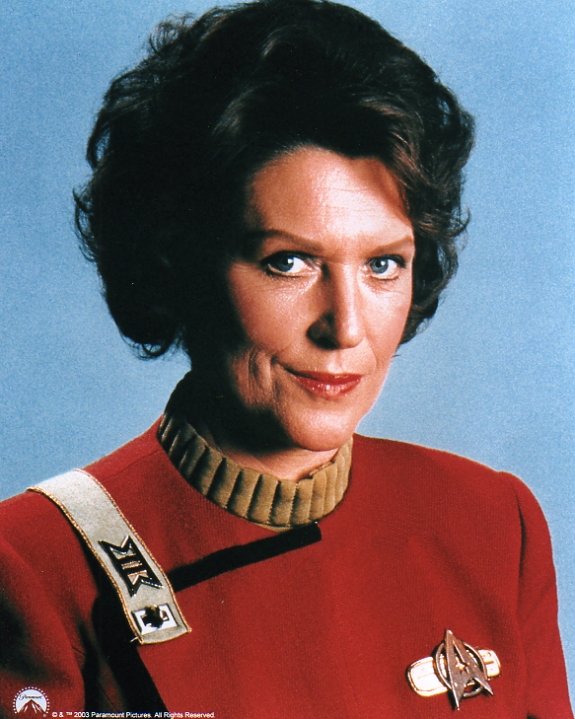 Star Trek: Excelsior crew: 2287 - 2293:
Star Trek: Excelsior crew: 2287 - 2293:
Commanding Officer: Captain Hikaru Sulu
Executive Officer: Commander Dmitri Masoud Valtane
Operations Officer: Lt Commander Janice Rand
Chief Science Officer: Lieutenant Saavik
Helm: Lt Commander Lojur
Navigation: Lieutenant Tiffe
Communications: Lieutenant (Christian) Slater
Chief Engineer: Commander Terim Azleya (female Denobulan).
Chief Security Officer: Lieutenant Leonard James Akaar
Chief Medical Officer: Dr. Altos Viger (James Sloyan as a Bolian)
Engineering Officer: Lieutenant Commander Devon Gabler
Security Operations Officer:
Science Officer: Ensign Tuvok
Star Trek: Excelsior crew: 2293 - 2298:
Commanding Officer: Captain Hikaru Sulu
Executive & Chief Science Officer: Commander Iliana
Operations Officer: Lt Commander (Tellarite male).
Science Officer: Ensign Tuvok
Helm: Lt - Orion female.
Navigation: Ensign Caitian male.
Communications: Lieutenant Commander Janice Rand
Chief Engineer: Commander Terim Azleya (female Denobulan).
Chief Security Officer: Lieutenant Leonard James Akaar
Chief Medical Officer: Dr. Altos Viger (James Sloyan as a Bolian)
Security Operations Officer: (Andorian female)
Chief Special Services Officer: Lieutenant (unjoined Trill female)
Author's Notes:
For the crew of the Excelsior for the never-made 1990s Star Trek: Excelsior TV series- updated with information from Star Trek: Picard season 3 - I chose the junior officers from the Star Trek Movies, along with characters established in the Voyager episode 'Flashback' and the novels The Lost Era: The Sundered and Forged in Fire. Additional characters come from Curt Danhauser's excellent Star Trek: Excelsior pages. There'd be the 'Old Guard' characters like Sulu and Rand with decades of experience and the 'New Generation' of Saavik, Gabler and Hawkins that would be New Starfleet with the big new ideas. This is about the juxtaposition of the experience of the old with the fresh ideas of the new. Both have very valid viewpoints, however don't forget the words of Chancellor Gorkon to Kirk when he said "If there is to be a Brave New World, our generation is going to have the hardest time living in it." I'd have loved to have seen the characters of Captain Hikaru Sulu, First Officer Dmitri Masoud Valtane, Science officer Saavik and Rand developed in those roles beyond what we saw in the feature film movies. They had so much potential to show how these background characters had grown into the main cast members that they would be here.
I've always been a fan of the Excelsior, ever since I first saw her on VHS video in 1984. I was pleased to see her on the big screen in 1992 with George Takei as Capain Sulu. As the Dundee Star Trek fan club reminded me in 1996, I was still a big fan of the Excelsior for the Voyager Star Trek 30th anniversary episode 'Flashback'. I think I cannot resist putting my character of Hawkins on the Excelsior, if only for a short-term mission. I've met most of the people in the cast list for this never-made series: George Takei, Robin Curtis and Tim Russ. Hawkins would be on as a junior social sciences officer, probably for a specific short-term mission. As a 'Klingon expert', I'd imagine Hawkins would be onboard to advise on their culture beyond warship crews. He'd be one of the 'new generation' of Starfleet officers, sparking off the attitudes of the 'Old Guard'.
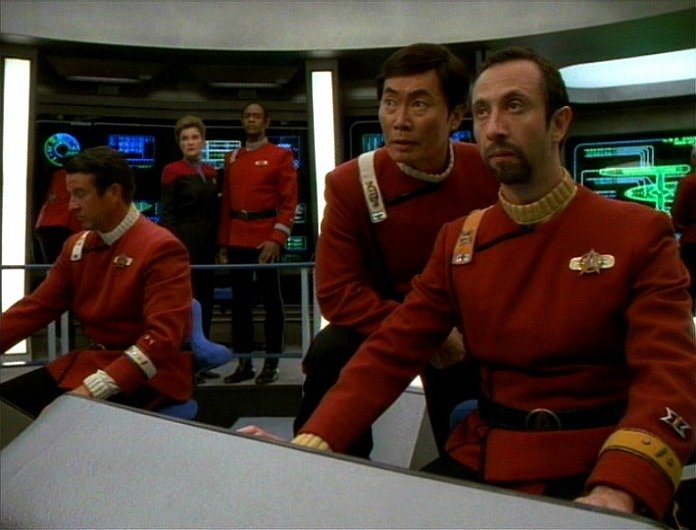 Captain Hikaru Sulu
Captain Hikaru Sulu
Stardate 9602.4. Four months after a successful three-year mission to study gaseous anomolies in the Beta Quadrant, with her dents from multiple battles now repaired at Starbase 12, the U.S.S. Excelsior is ready. After de-briefing, shoreleave, visiting his daughter onboard the nearly-ready Enterprise-B and mission briefings, Captain Hikaru Sulu now has the prospect of a five year mission dealing with the aftermath of the Praxis explosion and the subsequent Khitomer Accords. Sulu must work with his allies in the Empire as well as his friends in Starfleet to keep the peace on-track. In four months, things have changed within the culture at Starfleet. Cowboy Diplomacy and the Kirk rulebook has been firmly thrown out, a new book needs to be written by Captain Sulu and the crew of Excelsior. Taking back from NCC-1777 Titan the role as the Starfleet Flagship, the Excelsior needs to study and bring a new level of understanding to the Imperial Klingon Empire that has never been achieved before.
Author notes: As with Rand, there's not much canon development been done on the character of Sulu. For five movies he did little except say 'Aye Sir, warp five' or similar. Cut lines in ST II had him promoted to captain - stealing the Enterprise probably delayed that. Trek III had him say 'Don't call me Tiny' which was one of his most memorable lines of the first 5 movies. Star Trek VI showed Sulu - and gave him more lines - as captain of the Excelsior, showing loyalty to his former crew and the line when at maximum warp and told of the stresses to the ship "Fly her apart then!" 'Flashback' developed the character of Captain Sulu more. He said "Don't tell me Vulcans don't have a sense of humour because I know better". A statement bordering on arrogant given Spock is HALF Vulcan, but one showing the confidence of Sulu. Sulu also has dialogue with Michael Ansara's Klingon Kang. The banter between the two suggests this isn't Sulu's first encounter, given Kang's familiarity with Sulu's recent promotion to captain and the familiarity between the two characters in their dialogue; they know each other much more than the TOS episode 'Day of the Dove' would have allowed.
Commander Dmitri Masoud Valtane
Lieutenant Commander Boris Lojur
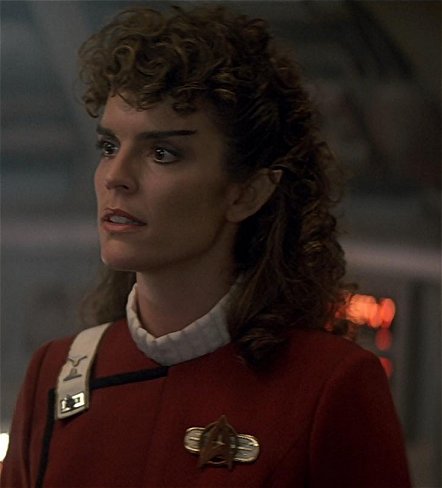 Captain Saavik
Captain Saavik
Returning to Starfleet after medical leave, following the destruction of U.S.S. Grissom, Saavik resumed her Starfleet career having not been implicated in any of the actions by Kirk's crew in the theft of Enterprise. Saavik became the Executive Officer and science officer of U.S.S. Excelsior. Having served earlier on the Enterprise during the classified Mutara Nebula Incident and the subsequent Grissom mission, Saavik was a lieutenant and fulfilling the wishes of her mentor Spock to be one of the best officers in the fleet. Saavik rose quickly to Lieutenant Commander and then Commander. In 2290, Hikaru Sulu recommended Saavik as the captain of brand-new Shangri-La class U.S.S. Titan, NCC-1777. Saavik commanded Titan as Starfeet flagship, addressing the Klingon Neutral issues including the Exo-Port takeover and Horizon Colony rescue.
Author's Notes: Saavik's history comes from Star Trek: Picard season 3 information on the backstory for Shangri-La class U.S.S. Titan.
Lieutenant Commander Janice Rand
Commander Terim Azleya
Female Denobulan Chief Engineering Officer of the Excelsior.
Ensign Tuvok
Ambassador Spock
The new ambassador. Takin on the role his father has traditionally had, Spock approached Gorkon to meet after the explosion of Praxis. Feeling a measure of responsibility with the Khitomer Accords and Azetbur taking over from her assassinated father, Spock uses his Starfleet knowledge to guide the Federation President and Azetbur towards what Starfleet and the Federtion can do to pick up the pieces on Qo'noS following the explosion. Unlike Sarek with his gold and gem sash of office, Ambassador Spock goes for black and muted markings as Ambassador, preferring to be able to move unseen in the shadows to get his diplomatic work done.
Author's Notes: It would be interesting to have seen Leonard Nimoy in 1996/7 playing the fledgling Ambassador Spock, finding his feet in a new role having been in Starfleet for forty years. Sarek had the flashy costume whereas Spock would be in a version of the robes he wore in his quarters in ST VI. Spock would be a guide for Azetbur, who has to balance peace with the Federation with factions in her own government.
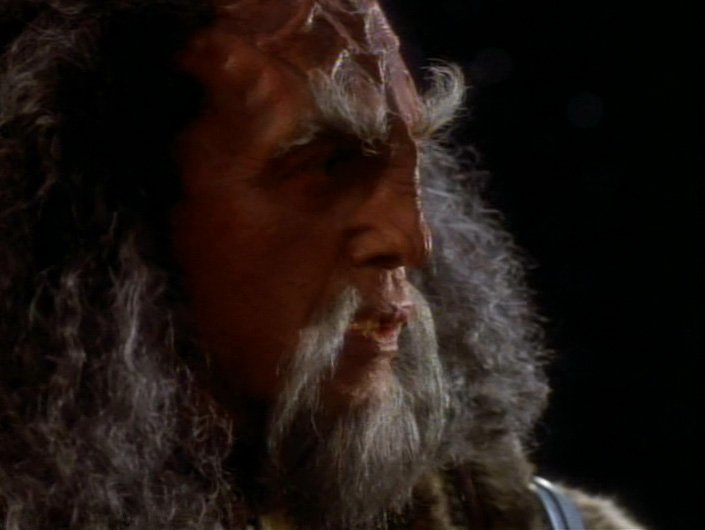 Kang
Kang
After the death of his first-born in 2289, Kang swore to Mara that he'd avenge them. He went back to what he does best - killing. Kang is now like a cross between the Terminator and Predator - a merciless killer who coldly slays everyone involved in the death of his firstborn. No matter who and no matter how many. Kang is in a VERY dark place. He's ruthless, heartless and his methodologies are on the very edge of honour. One small step and he'll lose it all and have gone too far. He dresses in black and is the Klingon Grim Reaper personified.
Author's Notes:
Each of the original Klingon main characters from TOS needed development and Kang had his extra scene from Voyager 'Flashback' to add to his. I saw in Michael Ansara the murderous warrior of Kang. After the Albino kills his firstborn son, Kang goes all revenge on him. Out of the three original Klingons, Kang is the one you see as the killer. Blood Oath told the story of how he was the Ice Man, all quiet and brooding. Now it's silent assassin, killing and questioning his way towards the Albino. Functional and lethal: that's Kang. Add to that his last encounter with Sulu saw the Excelsior explode sirilium gas around his ship in a nebula, Kang's going to be in a foul mood...
Kor
Former hero of the Battle of Klach d'kel Brakt, Dahar Master, hero of Organia. Just some of the titles General Kor had to his name. Throughout the 2260s, 70s and 80s he was at the forefront of the Imperial Klingon Navy, driving the Federation back from the border with the Klingon Empire. Instrumental in creating the Neutral Zone to keep Starfleet at bay, Kor had built up a powerful House and an impressive reputation. That was all to change after he was sent to kill a treacherous renegade Albino. In revenge for Kor coming after him, the Albino killed the firstborn son of Kor.
Kor took the death of his beloved firstborn child hard. With his wife leaving him, he was now the last member of his House. With no successor and no honour ahead of him, Kor took to drinking. Kor is a drunk, a cruel drunk. He still fulfills his duties, more or less. Less these days. His cruelty has cost him alliances, friendships and prestige In the future, this cruelty will see him stop Martok from becoming an officer because Kor belived his House and bloodlines are not worthy. The Albino may not have killed Kor, but he destroyed him.
Kor still has his ancient D-5 battlecruiser Klothos. The ship has been modified extensively over the decades; she was one of the first ships modified with a cloaking device, as the Bird of Prey-style copper chin guard and cabling over the aft hull testifies. The sensors, disruptors and torpedo systems have been similarly upgraded. Author's note: like the trialled 1990s upgrade for a T-55 Soviet tank. She may not look pretty with all the modifications, however the Klothos is one of the most advanced D-5 warships in the IKN.
Author's Notes:
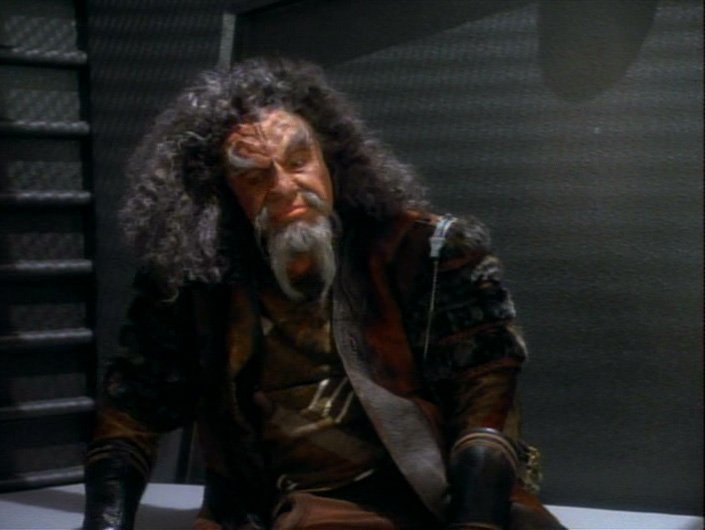 For the character of Kor I looked at the opening few minutes of DS9 Blood Oath. Kor is the revered Dahar Master who is now a drunkard. We know also from Martok on DS9 that Kor was on the officer selection panel and thought Martok wasn't worthy of being an officer. I wanted each Klingon to be an archetype and different and Kor was the cruel drunk, drowning the sorrow of losing his (last remaining) son and heir to the Albino. Rather than fighting, he's drinking himself to death. The excessive drinking and lack of honourable combat etc. may be why Kor has no wife present - she left this dishonourable loser to find honour elsewhere. Kor is a morality tale of alcohol destroying a reputation as well as destroying the mind and physique of the man. As he's Klingon, he can tae his booze so still can operate semi-normally when we need him to.
For the character of Kor I looked at the opening few minutes of DS9 Blood Oath. Kor is the revered Dahar Master who is now a drunkard. We know also from Martok on DS9 that Kor was on the officer selection panel and thought Martok wasn't worthy of being an officer. I wanted each Klingon to be an archetype and different and Kor was the cruel drunk, drowning the sorrow of losing his (last remaining) son and heir to the Albino. Rather than fighting, he's drinking himself to death. The excessive drinking and lack of honourable combat etc. may be why Kor has no wife present - she left this dishonourable loser to find honour elsewhere. Kor is a morality tale of alcohol destroying a reputation as well as destroying the mind and physique of the man. As he's Klingon, he can tae his booze so still can operate semi-normally when we need him to.
Koloth
General Koloth. Aristocratic Klingon with imperial blood running through his veins. Koloth has encountered Kirk and crew before twice with tribbles and once in 2287 regarding the prisoners of the late Oberth class starship Gagarin. Koloth has a great House, is a Dahar Master and the mighty K'T'inga class warship Gr'oth. General Koloth presided over the expansion of the Klingon Empire during the cold war, having built up his reputation fighting in the Federation-Klingon war. His high status means that he could count amongst his friends Kang, Kor, Korrd, Gorkon and Chang. They knew that they were fighting to keep the Klingon Empire and its culture free from the pacifying, unifying force that was the United Federation of Planets.
With the explosion of Praxis and the assassination of Gorkon, followed by the condemnation and death of his friend Chang, Koloth felt the compass of hs world spinning. He'd only just lost his firstborn son at the hands of the Albino and now the Khitomer Conference was proposing the Federation would send aid to Qo'noS to clean up a mess that the Empire seemed unable to deal with themselves. Add to this that Gorkon's daughter had been namked Chancellor in an act that felt more akin to the last will of a king or emperor, rather than an elected chancellor. The old Klingon Empire that General Koloth knew as big swept away and all that was left was uncertainty and an imminent invasion by Starfleet under the guise of a 'humanitarian aid operation'. Koloth was not impressed. Unfortunately his two closest remaining friends were of little help; Kor was drowning himself in typical style in a vat of bloodwine whilst Kang was still chasing down the Albino. The trail for the Albino may have gone cold, but the trail of blood left by Kang rang long and hot. This left Koloth frustrated. At this point he was visited by the last person he expected or wanted to see: Captain Hikaru Sulu of the U.S.S. Excelsior.
Koloth was asked by Sulu about the Klingon Empire and how it fared now that the Neutral Zone was gone and Azetbur was Chancellor. General Koloth hardly expected to be asked to betray the secrets of the Empire in a casual conversation. Koloth spoke in very general terms about the current fleet shortages and played down the damage caused by the Praxis shockwave. Whilst Koloth was polite and cordial, he was in no mood to be humiliated yet again by Starfleet. Kang had told him about the Azure Nebula incident with the Excelsior; Koloth was in no mood for tricks. Once Sulu and the others had gone, his plan went into action. There were other Klingons who felt the same way as Koloth and were prepared to act. Being a Dahar Master, Koloth was the natural choice for leader. The coup went to plan, the hostage he kept did not. Koloth felt it dishonourable to kill the Chancellor in cold blood. He kept her alive and as the two of them talked and discussed Klingon lore, philosophy, literature and politics, so he realised that she was in fact the person best suited for the Empire after all. Times had changed.
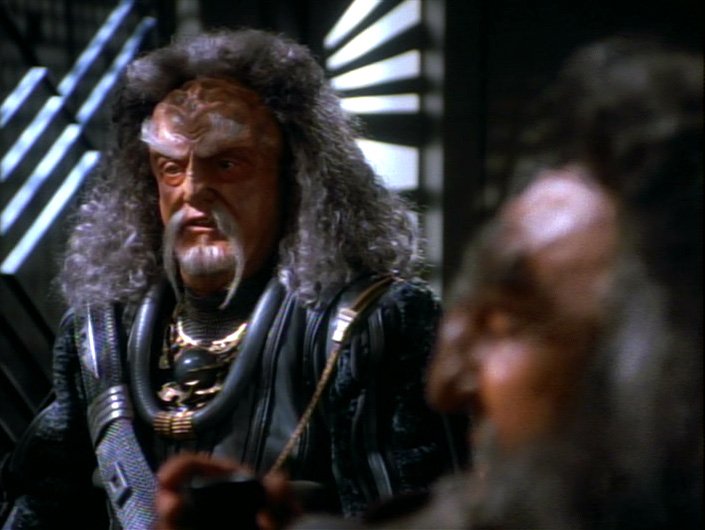 Once the coup had collapsed, with the help of Koloth, Azetbur felt that although he had to be punished, death was too severe. Instead she exhiled him from Qo'noS to the monestary at Boreth. There he was to recquaint himself with the works of Kahless and look into his heart. He had lost his way and Azetbur gave him the punishment of finding his true path once more.
Once the coup had collapsed, with the help of Koloth, Azetbur felt that although he had to be punished, death was too severe. Instead she exhiled him from Qo'noS to the monestary at Boreth. There he was to recquaint himself with the works of Kahless and look into his heart. He had lost his way and Azetbur gave him the punishment of finding his true path once more.
Author's Notes:
Koloth is an old school aristocrat. He hates the changes the Empire is making. He is the Klingon who has lost his way in all of this change. Fans may rage at the storyline for William Campbell's character but the important thing is it is a story arc - one with FAR greater depth than Blood Oath had time for. Koloth is needed to make sure Sulu and the Excelsior have a role in the Klingon story arc. And to ensure certain matters about Azetbur are adhered to. Koloth knows Kang, Korrd and Kor; he also knew Chang, Kesh and Gorkon which means seeing Gorkon murdered by humans, only to be told Chang is dead and the Empire relies on the same humans is more than Koloth can bear.
I wanted to develop the original three Klingon main characters of Kor, Koloth and Kang. For Koloth I looked at both his appearances in TOS: Trouble With Tribbles, TAS More Trouble, More Tribbles and DS9 Blood Oath. I wanted to have a plan for the character over those eighty years that went further than just saying his son was murdered in 2289 and he spent the next eighty years hunting down the Albino. This would be a little single-minded for Koloth and also a little inept. By 2293 Koloth would have been promoted from captain to general, he would be head of his House and a Dahar Master. Quite the resume. Koloth is also resentful of humans. Every time we saw him in TOS and TAS, Kirk and crew would outwit him and Scotty would beam tribbles onto Koloth's ship. Kirk's crew would then laugh and the fade out music would play. I built up from this that Koloth felt humiliated by the two tribble encounters with Kirk. Koloth is an aristocrat, imperial blood of the emperor's lineage pours through his veins and his loyalty is to the Empire. To see friends like Chang treated as traitors and their memories erased from Klingon culture was hard for Koloth; to then see the Federation sending aid and helping the Klingons is too much for Koloth. I wanted him to be the one who takes matters into his own hands to sort the Empire out.
The result would be a memorable two-parter with Koloth in a coup plot against Azetbur. As an honourable Klingon, he wouldn't kill Azetbur and that allows the two characters to tlan build bridges. We have the time honoured bad-guy-see-error-of-ways and Koloth switches back to support Azetbur after understanding she may be a politician's daugther but she's also fulfilling the vision her father, Gorkon, saw on Boreth. As Koloth spared Azetbur's life, she'll spare his and Koloth will be exiled to study on Boreth as a 'punishment' from Azetbur. This leaves it open for Koloth to return. It also explains why the Albino hunt takes so long. In Blood Oath, Koloth has a medallion on with a half-sphere clasped on. This would represent Qo'noS and display plainly the loyalty of Koloth to the Empire.
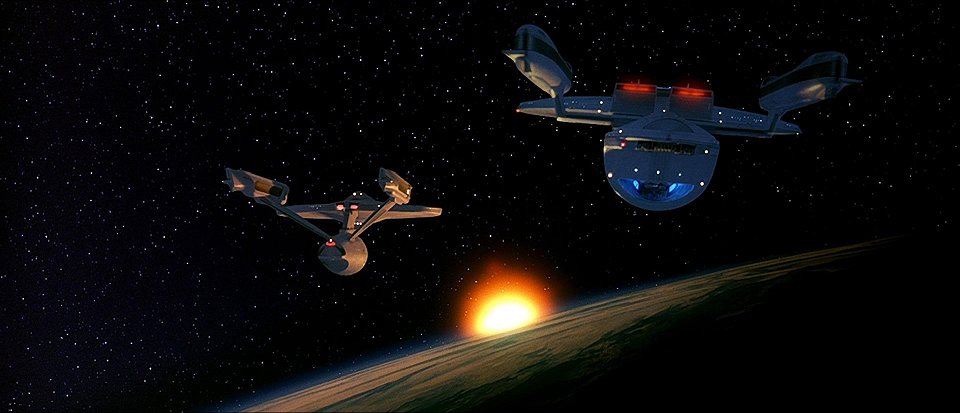 Primary Hull
Primary Hull
This consists of 12 decks that can be summarised thus:
1 Main Bridge, Briefing Room, Ready Room
2 Emergency Life Support
3 Senior Officers Standby Quarters
4 Junior Officers Standby Quarters
5 Impulse Engines, Crew Quarters
6 Impulse Engines, Sickbay, Transporters, Crew Quarters
7 Impulse Engines, Crew Quarters, Guest Quarters (outer sections)
8 Impulse Engines, Crew Quarters, Officers Quarters (outer sections)
9 Impulse Engines, Officers Quarters (outer ring), Mess Hall / Lounge (Forward), Recreation Areas, Theatre
10 Brig, Security Office, Armoury
11 Science Labs
12 Sensor Control, Science Labs
Secondary Hull
This consists of 21 decks that can be summarised thus:
13 Warp Core Deuterium Injector
14 Saucer Separation Manual Override
15 Torpedo Storage / loading
16 Torpedo Storage / loading
17 Torpedo Launcher Access, (Aft) Shuttle Bay
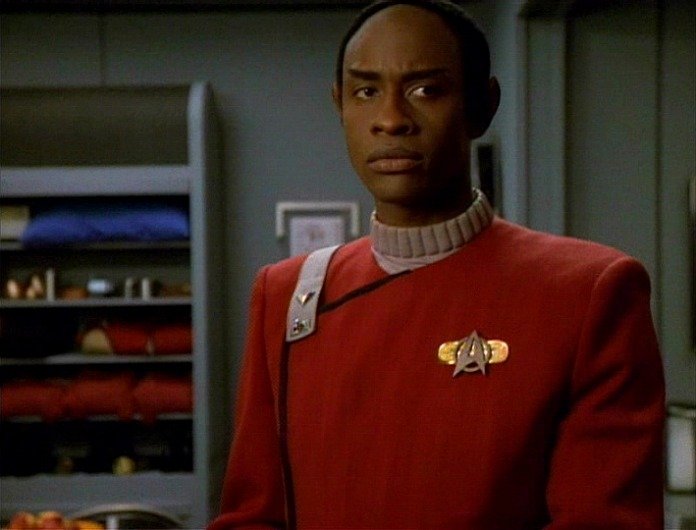 18 Deuterium Tank, (Aft) Shuttle Bay
19 Deuterium Tank, Warp Plasma Central Manifold, (Aft) Shuttle Bay
20 Battle Bridge, Engineering, Intermix chamber, (Aft) Cargo Conveyer
21 Engineering, Cargo Bay (aft)
22 Cargo Bay (aft), (Aft) Tractor Beam
23 Aux Deuterium Tank
24 Aux Deuterium Tank, Botanical Gardens, Crew Lounges, Rec. Areas
25 Main Deflector Dish
26 Aft Torpedo Conveyer / Loading
27 Aft Photon Torpedo Launcher
28 Engineering Support Bay, "WorkerBee" Pods
29 Engineering Support Bay
30 Engineering Support Bay, Aux Computer Core
31 Engineering Support Bay, Aft Torpedo Storage / Conveyance
32 Engineering Support Bay, Aft Torpedo Storage / Conveyance
33 Engineering Support Bay, Warp Core Antimatter Injector
34 Antimatter Storage / Loading port
18 Deuterium Tank, (Aft) Shuttle Bay
19 Deuterium Tank, Warp Plasma Central Manifold, (Aft) Shuttle Bay
20 Battle Bridge, Engineering, Intermix chamber, (Aft) Cargo Conveyer
21 Engineering, Cargo Bay (aft)
22 Cargo Bay (aft), (Aft) Tractor Beam
23 Aux Deuterium Tank
24 Aux Deuterium Tank, Botanical Gardens, Crew Lounges, Rec. Areas
25 Main Deflector Dish
26 Aft Torpedo Conveyer / Loading
27 Aft Photon Torpedo Launcher
28 Engineering Support Bay, "WorkerBee" Pods
29 Engineering Support Bay
30 Engineering Support Bay, Aux Computer Core
31 Engineering Support Bay, Aft Torpedo Storage / Conveyance
32 Engineering Support Bay, Aft Torpedo Storage / Conveyance
33 Engineering Support Bay, Warp Core Antimatter Injector
34 Antimatter Storage / Loading port
Episodes from Star Trek: Excelsior mini-series inspired by Flashback and The Undiscovered County:
1.01 and 1.02 – Brave New World
1.03 – The Balance of Honour - The revelation of General Chang; a blood oath document was delivered to the High Council shortly after Azetbur had attended the Khitomer talks, in the document, Chang confesses that he was behind the assassination of Chancellor Gorkon. The document was there as an admission of guilt, an honourable man who felt he had to do a dishonourable act to save the Empire. He went further to explain that he had always planned to carry out Mauk-to'Vor, not to redeem himself but to save the honour of his House. Chang knew he was damned to Grethor and was prepared to accept this burden to save the Empire. Chang had never planned for the Excelsior to have been there to stop him. He was denied honourable suicide. Chang, as a young lieutenant, had been on one of the warships approaching Earth in 2257. They had been called away from victory at the last moment by L'rell. Mother. Chang felt dishonoured and denied glorious victory. Gorkon was about to surrender to Federation aid; Chang felt he had no other honourable choice than to murder his friend Gorkon, and anyone else who attempted to befriend the true enemy of the Klingon people. The conspiracy was to maintain the status quo. hang sent this last message as he wanted to show his face to his enemy, as a true Klingon should. Chang had made General and has been a friend of Gorkon. The murders and loss of persnal honour were a worthwhile cost for the greater good. This splits the council in half.
1.04 – Imperious Rex - Chancellor Azetbur story.
1.05 – The Art of Listening- Ambassador Spock story.
1.06 – Ascension - House of J'tal and General Qo'mar story.
1.07 – At the Edge of Honour - Sulu and the Excelsior meet up with Kang for the first time since the Azure Nebula Incident and he's in a very dark place... Each of the three original Klingons would be an archetype of the species. Kang is the warrior, who is out following his blood oath to exact vengeance on the Albino. He doesn't care who gets in the way and how many - this is Kang doing what he does best: killing. The question is can he stop himself becoming just a mindless murderer instead of a Klingon warrior? Does he still remember where the line is drawn?
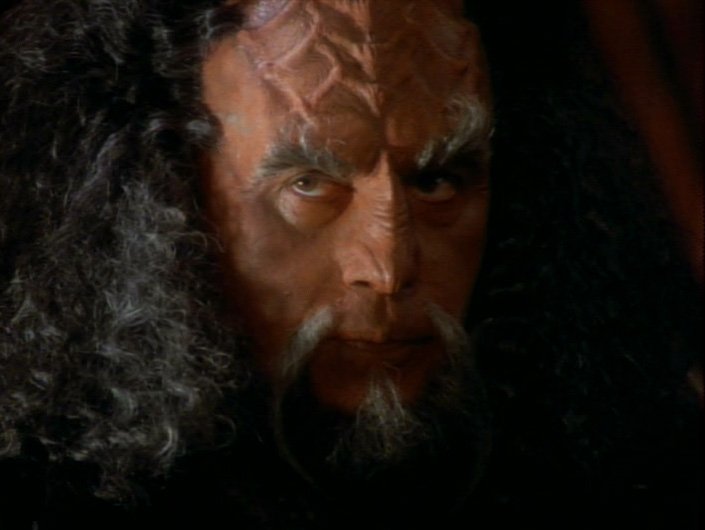
1.08 – Encirclement - seeing the Trek universe from a Klingon-centric viewpoint.
1.09 – Mudd junior – follow up to the never-written ST: Phase 2 episode Mudd & Son. Before the joy of Rainn Wilson there was the Harry Mudd of Roger C. Carmel. This is a lighter tone episode about the son of Mudd, yet also deals with the Orions and how they exploit the fall of the Klingon Empire. Strangely a similar turn to what the Orions seem to be doing with Mudd in ST: Discovery.
1.10 – Fracture - Ch'ramak and Terajun.
Season 2 – 2294
2.01 – Echoes of Tian Nan Men - Azetbur sends in the fleet. Klingon version of Prague Spring.
2.02 – Fallen Hero. The Excelsior catches up with Kor, a hero who's fallen into a bottle after his firstborn son was murdered. Archetype number 2 for the Klingons: the alcoholic. Alcoholism is prevalent in the former Soviet Union and modern-day Russia. This is also the case in the Klingon Empire with Blood Wine a staple of TNG, VOY and especially DS9. In the DS9 season 5 opener, Apocalypse Rising, the Order of the Batleth induction process is seen and drinking is a massive part, even promoted. Some Klingons will take this too far. Kor is also seen in DS9 Blood Oath opening part as a drunk. This is perfect for this episode where Kor show himself to be a drunk after the death of his son. A cruel drunk. A morality tale of how alcoholism destroys people and their families. Star Trek does this occasionally and this time it's a Klingon's tale.
Kor still has his ancient D-5 battlecruiser Klothos. The ship has been modified extensively over the decades; she was one of the first ships modified with a cloaking device, as the Bird of Prey-style copper chin guard and cabling over the aft hull testifies. The sensors, disruptors and torpedo systems have been similarly upgraded. Author's note: like the trialled 1990s upgrade for a T-55 Soviet tank. She may not look pretty with all the modifications, however the Klothos is one of the most advanced D-5 warships in the IKN.
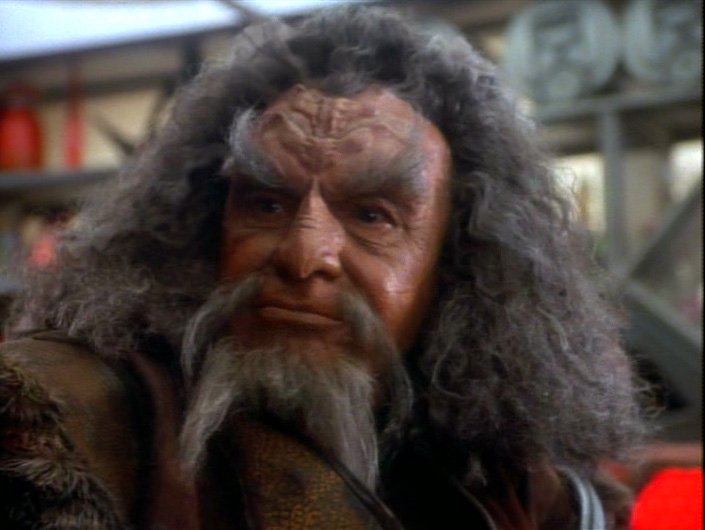
2.03 – Organia – revisiting the world that foresaw the Khitomer Accords... I hate god-type beings. They are lazy story devices and our heroes cannot really defeat people like Trelane, Organians, Excalbians and Q. Dull. But for the story point here, important to show the Organians have left. This is why Kruge could attack the Grissom etc.
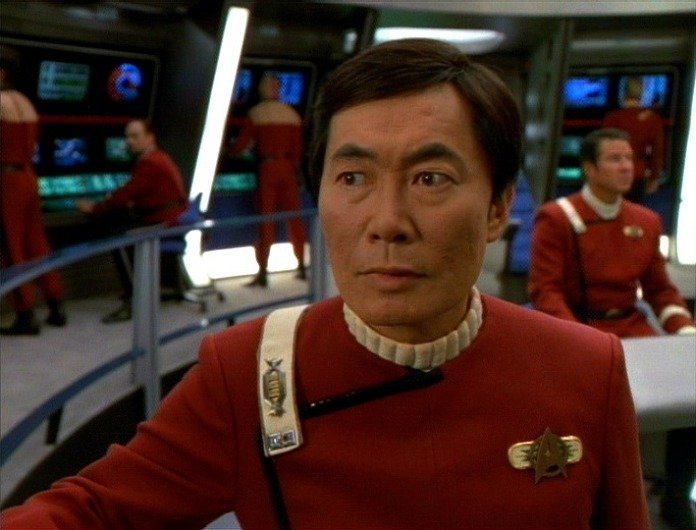 2.04 – Our Generation – Sulu meets up with Koloth, who's not happy with the Khitomer Accords. The third Klingon archetype: the honourable noble. Koloth is what Kor evolved into in DS9, a noble who was descended from the blood of Kahless. William Campbell came across both in Trouble with Tribbles and Blood Oath as the aristocratic Klingon. The political beast who has connections through blood and his House. He knew Kang and Kor, but also was in with Kesh, Gorkon, Korrd and Chang. Why would he trust humans over these Klingons he's known for years when all Kirk did was put Tribbles onto his ship and humiliated him? The title comes from Gorkon's line "If there is to be a Brave New World, our generation is going to have the hardest time living in it". This story acts as a primer for what happens next...
2.04 – Our Generation – Sulu meets up with Koloth, who's not happy with the Khitomer Accords. The third Klingon archetype: the honourable noble. Koloth is what Kor evolved into in DS9, a noble who was descended from the blood of Kahless. William Campbell came across both in Trouble with Tribbles and Blood Oath as the aristocratic Klingon. The political beast who has connections through blood and his House. He knew Kang and Kor, but also was in with Kesh, Gorkon, Korrd and Chang. Why would he trust humans over these Klingons he's known for years when all Kirk did was put Tribbles onto his ship and humiliated him? The title comes from Gorkon's line "If there is to be a Brave New World, our generation is going to have the hardest time living in it". This story acts as a primer for what happens next...
2.05 - Ch'ramak - The collapse of the Empire, as predicted by Spock, has begun! The fall of the Warsaw Pact and Soviet Union in 1992 preceded civil wars in Georgia and many of the 'stans countries. Chechnya was a warzone twice in the 1990s and early 2000s. This is the Afghanistan and Chechnya of the Klingon Empire and reflects what has happened after Praxis has brought the Empire low. Spock predicted the break-up of the Klingon Empire and this is where is really starts.
2.06 – Destinies - Sulu and the U.S.S. Excelsior pick up Ambassador Spock for a meeting on Qo'noS with Chancellor Azetbur. There is a coup on the Klingon Empire. And it is led by Koloth! Cliffhanger ending. I wanted people to be invested in who topples Azetbur in a coup. It couldn't be a new character introduced for the job, it HAD to be someone we knew and wouldn't totally expect. Koloth fit the bill as a proud, loyal Klingon that doesn't want the Empire to surrender. He saw Chang as a loyal Klingon and quite frankly everything seems to be benefitting the Federation, not the Empire. And Azetbur being crowned like a Klingon Queen Elizabeth makes Gorkon feel more like the Klingon Henry VIII than Abraham Lincoln. This also had to have some reason for the Excelsior crew to both know the culprit and also have a way out of this one.
Author notes:
Season 1 of Star Trek: Excelsior or ST: The Interim Years would have to grab the attention of the viewer or reader. As with modern CBS productions like ST: Discovery, the story should adhere to canon until canon gets in the way of a good story. The starting point for the mini-series would be where we left off in the Undiscovered Country - Excelsior flew off into the sunset and the Khitomer Accords were drafted. But not signed yet. The next step was the return of Mudd via his son - and the Orion Syndicate. Then it's guest star of the week as we alternate from Starfleet to Klingon Empire - much in the style of Star Trek: Discovery. The three Klingons from DS9: Blood Oath would be the focal points; indeed, Blood Oath provides the plot and character points for each of these former TOS Klingons as the Albino had killed their firstborn children four years earlier in 2293. Now, each Klingon dealt with that loss and pain differently. Kang does what he does best and gives in to his cool rage, slaughtering his way towards the Albino. At any cost and any body count. Kor has fallen into the bottle. As the last of his House, he sees no continuation of his line and no honour. He becomes a cruel drunk, as he will be with Martok by denying him a path to being an officer just because Kor sees his lineage and bloodline as being unworthy. Finally Koloth. This one I took the approach of no guts no glory, no risk no prize. I wanted the arc to be the kidnap of Gorbachev in 1990 by those scared of his reforms. If we had a new Klingon, no one would care - as with Saavik becoming Valeris in TUC. The Klingon I wanted to use was Koloth. He's aristocracy in the Empire and he's friends with Kor, Kang, Gorkon and Chang way before Praxis and the Albino. Now there's a murdered Gorkon and Azetbur wants to be friends with the humans that killed him(!) This is all too much for Koloth. He likes the honour of the old ways. And he wants them back... This ends with a cliffhanger of Koloth looming out of the shadows of the High Council chambers to confront Azetbur in a cliffhanger summer worthy of the end of Best of Both Worlds.
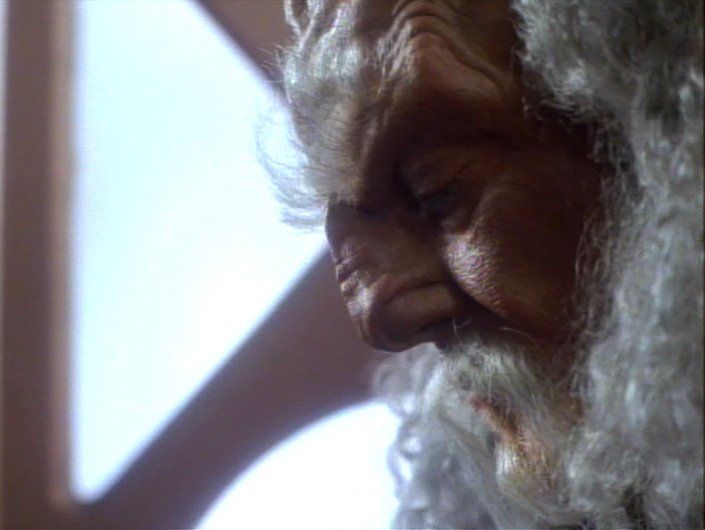
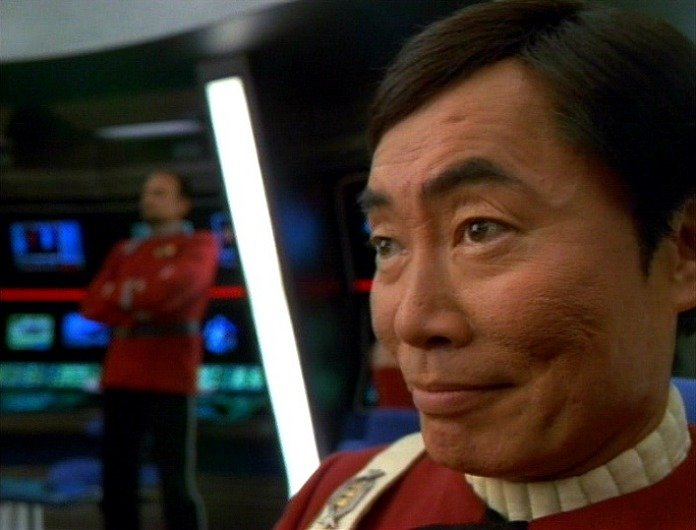 Author notes:
Author notes:
Season Two of Star Trek: Excelsior, the earliest Interim Years stories, builds on the cliffhanger of the first season. My thoughts are that the character of Koloth has to redeem himself enough to not be executed for his treason. Still, got sixty years for redemption before DS9 Blood Oath. 2295 is also the year of the Plasma Plague outbreak on Oby V mentioned in TNG. As a series that would have been filmed in the Nineties, the conflict in the Balkan countries of Bosnia, Serbia etc. - remnants of the break-up of Yugoslavia would have influenced Star Trek: Excelsior in no small way. As with the conflict in ex-Yugoslavia, that split up US thoughts from the Europeans, the Federation Council would face dilemmas with their tactical fleet and its future role and size, the break-up of the Klingon Empire along the borders would create brushfires. The option is to let them burn themselves out - the Yellowstone Option. The other option is diplomacy and interference for peace.
The Khitomer Accords and Starfleet Review of Stardate 10000 are all in 2295. Change is in the air and very much the theme of Star Trek: The Interim Years. This is where momentous changes would be proposed. Starfleet has a defensive element, as well as the exploration, diplomatic and science elements. With the cessation of hostilities with the Klingons, the justification for dreadnoughts, carriers and assault ships has to be made in other ways, or they will be mothballs and scrapped. This is the classic political battles of hawks and doves. The peace dividend is on Starfleet, yet the dangers are still there, perhaps in new and different forms.
As with the Armed Forces of the United Kingdom from 1989 onwards, where I witnessed the changes firsthand, Starfleet has to evolve away from the Cold War to a period of bush fires and peacekeeping. Exploration, science and diplomacy are the mainstay of the 2290s. Captain Sulu finds his niche as a diplomat and explorer, finding a new path for the Federation.
 Season 3 – 2296
Season 3 – 2296
3.01 – – .
3.02 – – .
3.03 – – .
3.04 – –
3.05 – – .
3.06 – – .
3.07 – – .
3.08 – – .
Author's Notes:
I see these “lost ST: Excelsior stories” as being the background to the Interim Years. These are the ships in the Federation News, but it’s missions like the Sheffield that are doing the real research in the background. The early era 2290 – 2298 are more the Excelsior with the experienced Old School Sulu; the later period 2298 – 2311 is more Enterprise-B with the then-experienced John Harriman.
Lots of Klingon Diplomacy with new Ambassador Spock, veteran Sarek and loose cannon Curzon Dax. The steady dismantling of the Neutral Zone and the ‘rogue Klingon’ attacks. Enterprise-B feud with General Choroth, ex of IKS Vengeance and Sulu encountering Kang or Koloth (more akin to his DS9 persona). TNG pointed out that the peace process with the Klingon Empire was lengthy. Very lengthy. Sarek, Spock, Dax and Riva all were involved in a process that took around fifty years to come to fruition in the time of the loss of the Enterprise-C. As with Russia 1991 - today, things got worse - MUCH worse initially before they got better. Tanks fired on the Russian White House, the economy crashed in 1998 and wars raged in Chechnya. All of this would be reflected in Star Trek: Excelsior and the opening chapters of the Interim Years. Klingon Academy had civil war before Praxis; I definitely see in-fighting after the Khitomer Accords are signed. Peace certainly does scare some people and some Klingons. And they'll go to any length not to surrender to the Federation - which is EXACTLY what it feels like to some of the great Houses.
I have a story idea, homage to TOS, with ‘Mudd junior’. Perhaps following on from the Phase 2 episode never written called ‘Mudd and Son’.
Yes, The Interim Years will effectively have a ‘never made Sulu and John Harriman’ series running in the background. Might even knock up season 1 for a laugh.
We’ve a few bits we ‘know’ already, with the Choroth Incident with the graphic novel and the Terajuni Incident. On the back of this we need the Excelsior, fresh from the latter, carrying Ambassador Spock, meeting with the Klingon Ambassador to calms the waters. The Enterprise-B is still in space-dock for months to repair the Nexus damage, so good old NCC-2000 is hauled out.
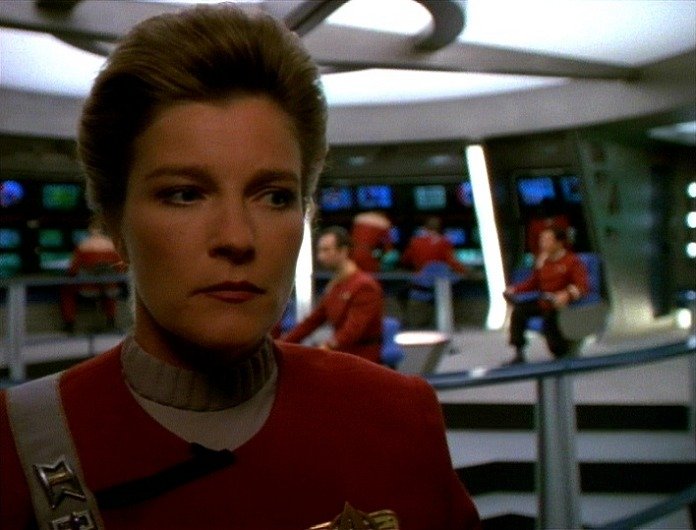 Author's Notes:
Author's Notes:
In "Flashback", it is Ensign Tuvok who embodies the New Generation attitudes, captured in the confrontation with Captain Sulu aot going throug the Azure Nebula to rescue his friends Kirk and McCoy. In that scene, Tuvok is shown to have only TWO MONTHS experience out of the Academy. Why the hell do you join a deep space mission two months from its end? This scene makes Sulu look good by making Tuvok look weak. A good scene has a STRONG counterargument countered by an equally STRONG argument; at least make Tuvok have three YEARS experience. Tuvok quits after only four years at the Academy and two MONTHS in the field from unpleasant experiences with humans. What the hell does this say about Starfleet? It seems being at the forefront of change serves the Old Guard to put down the new as 'stupid' or 'wrong'.
Excelsior in The Undiscovered Country, Flashback and the ST: Excelsior Writers Guide (2001) is a very White-human-heavy starship, with only Asian-American Sulu, the Eastern European Lojur, and the alien Rotciv and Tuvok as the non-Whites on the Bridge. The Enterprise-B also suffers from a white-heavy case with only Demora Sulu, the Chief Engineer played by Tim Russ and the Science Officer played by Jeanette Goldstein as the non-whites on the Bridge.
The Interim Years version of the ST: EXC stories, featuring both of these Excelsior class starships, will have a more diverse crew.
![Excelsior's bridge [production model 1]](excelbrdg2.jpg)
"The above artwork is © Star Trek Fact Files. All rights reserved"
Thanks to Curt Danhauser and the Excelsior website team for their Excelsior enthusiasm and bridge station guidance.
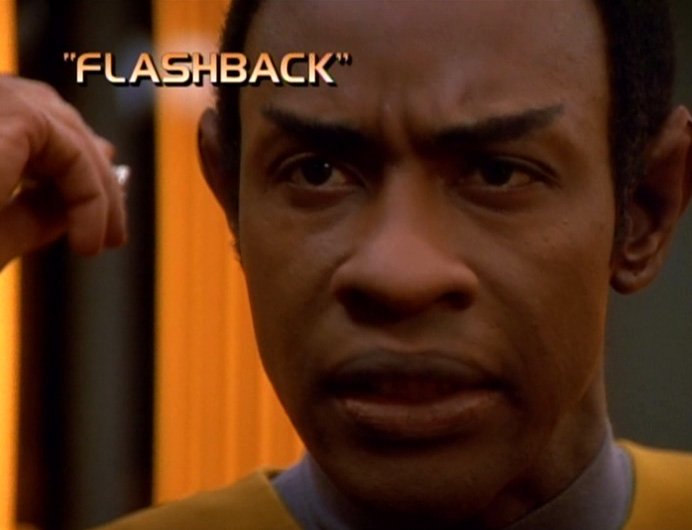
Author's notes:
This is an alternative 1996 where the backdoor pilot episode for a Captain Sulu series is filmed as the ST: Voyager episode "Flashback". The backdoor pilot is a success and a proper pilot for the miniseries is ordered. A proper series was unlikely due to the presence of both DS9 and VOY till at least 2000 and Paramount didn't have the staff or resources to film three full 26-episode series. In this alternative 1996, the stars from that era are called to reprise their roles for a series mirroring ther events in Eastern Europe and the former-Soviet Union; this is a series about hope following the breaking up of the Klingon Empire and following-up on some of the more popular characters and events of the original cast Star Trek TV series and movies. People from Leonard Nimoy and De Forest Kelley to Rosanna DeSoto, Michael Ansara and Robin Curtis are asked to reprise their roles for the miniseries. What George Takei referred to at the time as "The Adventures of Captain Sulu" is branded "Star Trek: Excelsior" and soon becomes the precursor for my own Star Trek: The Interim Years.
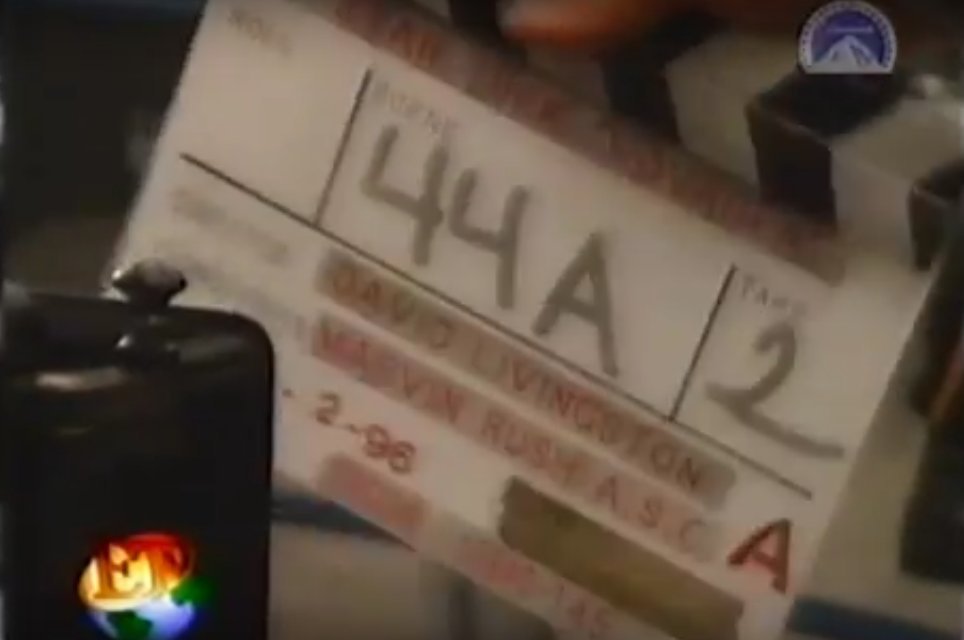
Whereas the Interim Years deals with a number of starships and a lengthy historical period through flashbacks and memories, Star Trek: Excelsior focussed on the titular starship, using the Bridge set now not needed from the end of the original series movies. This set existed as it was used up to Star Trek: Nemesis as the Bridge of the Romulan Warbird Valdore. The rest of the sets came from "Flashback" and would be built upon as necessary or use redressed sets from Voyager. The episodes would be the standard 45 minute teaser and three act formula that had been pioneered with TNG. The feel of the miniseries would very much try to capture the feel of Star Trek VI: The Undiscovered Country both in terms of the music and the costumes and sets. In an ideal alternative-1990s scenario, the people involved in the original movies would be brought in to help with this miniseries, to both keep the 'feel' correct and as Jeri Taylor and TV proction staff would be too busy filming DS9 and VOY.
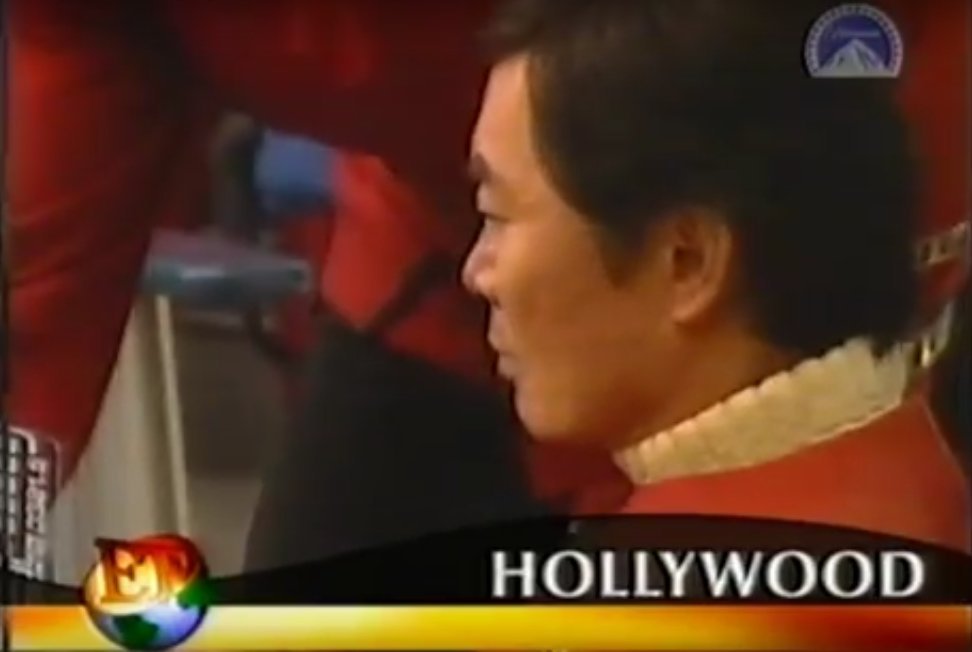
Star Trek: Excelsior starts from where the Undiscovered Country leaves off; the Enterprise-A has retired and the crew who saved the day for 28 years are finally disbanded and broken up. A new Enterprise-B is nearing completion at San Francisco orbital fleet yards and Starfleet has to have a flagship to deal with the Klingons without Kirk to call on. The man who steps up for this role is Kirk's legitimate protigee Hikaru Sulu. Both men served together for 25 years on two ships named Enterprise, risked their lives for each other and even travelled across time to save the universe a couple of times. Sulu picks his best friend from the TV show, Walter Koenig's Pavel Chekov, to be his First Officer, replacing the character of Commander Dimitri Valtane who was killed in the Azure Nebula Incident shown in "Flashback". Robin Curtis returns to wear the Vulcan rubber ear pieces as the science officer Saavik, a role that she played in Star Trek III and IV. The rumour mill runs for a short time that the original Saavik, Kirsty Alley, will reprise her role but that falls through with her other TV demands.
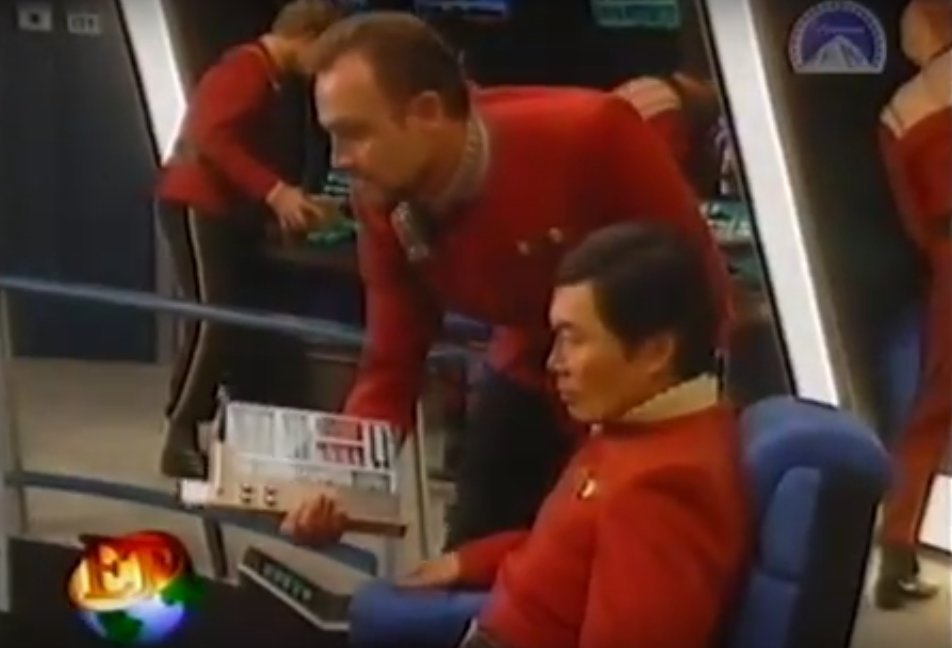
Star Trek: Excelsior had a proper pilot episode released in 1997 after the success of "Flashback". With storylines written by Nicholas Meyer, Leonard Nimoy and Harve Bennett, the miniseries kept the feel of the Wrath of Khan movies, satisfying the almost rabid Star Trek fans who had argued on the fledgling internet that this was the 'real' Star Trek coming back (yes, amazing isn't it that the anti-ST: Discovery arguments all over the 'net today are the same tired old "not my Star Trek" debates that have cropped up in the 80s with TNG, 90s with DS9 and VOY and 2000 with ENT and now 2017 with DSC). With storylines on the internet, the economic collapse of the Soviet Union, the civil wars of Yugoslavia, Georgia and the 'stans regions, Star Trek: Excelsior stayed topical and relevant - the factor that was amongst those that made Star Trek IV and VI so popular with the general public, as much as the fans.
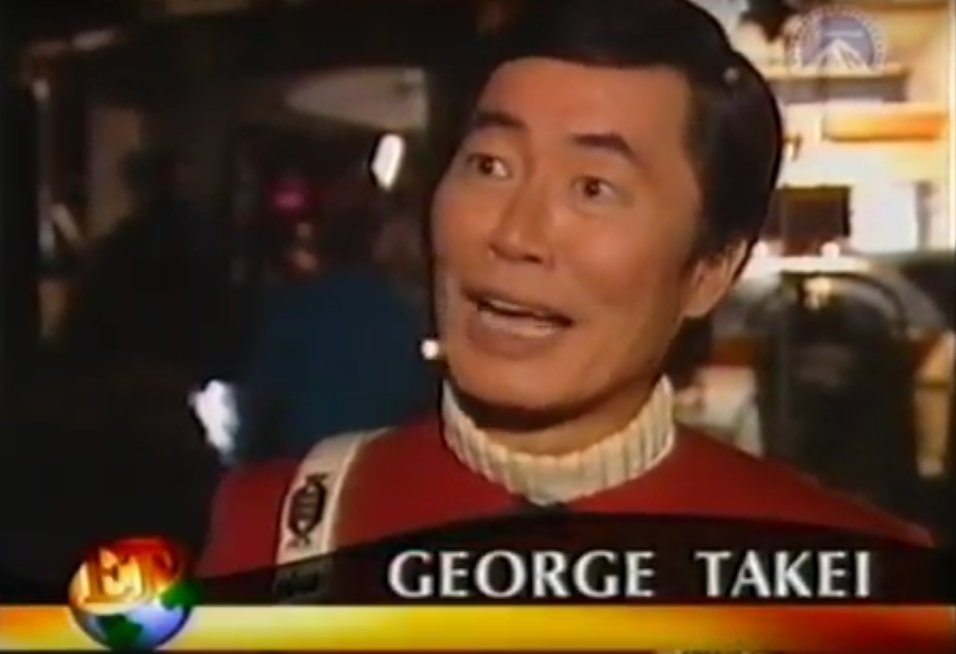
The look and feel of Star Trek: Excelsior is very inspired from the movie that highlighted this starship: Star Trek VI: The Undiscovered Country. Cliff Eidelman is brought back to do the theme for Star Trek: Excelsior, which is a shortened version of the theme from Star Trek VI (itself inspired by the opening for Stravinsky's "The Firebird"). Rick Sternbach and Mike Okuda work on the sets and props for the series, with the Bridge set designed by Herman Zimmermann. The phaser, communicator and tricorder props all come from the last two classic Star Trek cast movies V and VI. The uniforms are from the Wrath of Khan movies, although the complicated system of divisions gets simplified for TV use to mirroring the command, science and engineering colours. The exception is the medical uniform that gets pulled out for Majel Barrett-Roddenberry, reprising her role as Christine Chapel, now the Chief Medical Officer of the Excelsior. Tim Russ ocasionally guest stars in ST: Excelsior during breaks from filming Voyager; this is an opportunity for him to change costumes and meet some of the legendary actors that have been in the various series and movies since 1966.
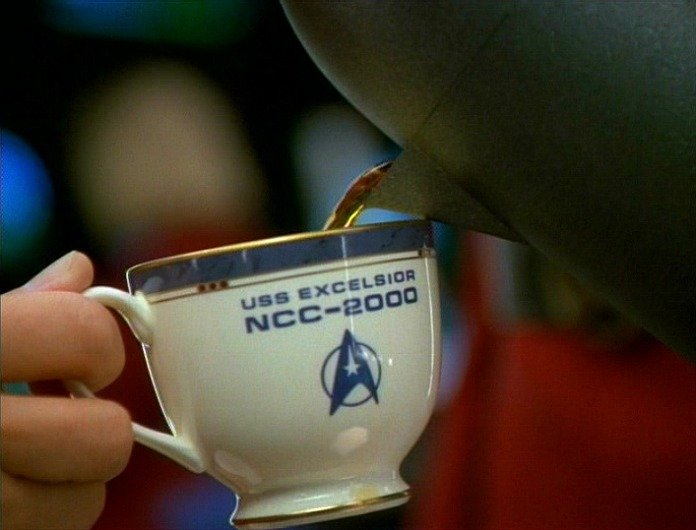
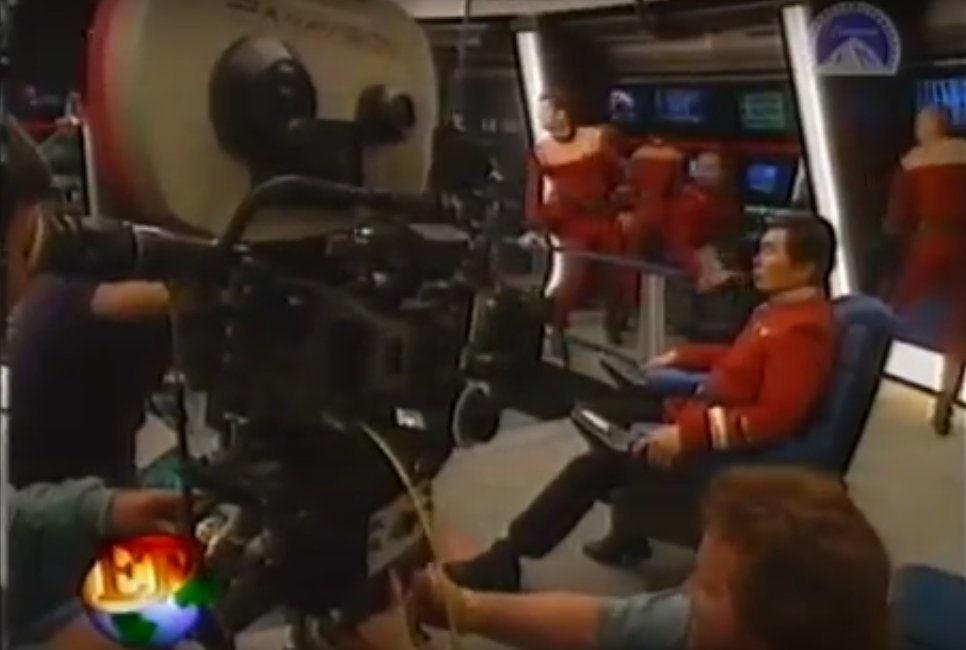
Star Trek: Excelsior deals with many of the issues arising from the break-up of the Soviet Union and Warsaw Pact; armies that no longer have a purpose or even food to eat, weapon systems allowed to rust and are even compromised and stolen. The infrastructure of the Klingon Empire is looked at as an economy built upon war and the people have lived in poverty as a result. As with the Soviet Union, the Klingon Empire could not keep up with the advanced intellectually and technology-driven economy of the Federation. (unlike the Interm Years, this is pre-ST: Discovery and the Klingons were just an analogy of the Soviets, with the development of Viking and biker gang culture from Ron Moore on TNG, DS9 and VOY. Big hair and bumpy heads. Storylines about the son of the rascal Harry Mudd prove popular, as do the return of popular Klingons Kang, Kor and Koloth played by Michael Ansara, John Colicos (the original Klingon) and William Campbell respectively. Unlike in ST: Enterprise, the Klingon forehead issue is never addressed, the audience of the time accepting that this is how Klingons always were supposed to look.
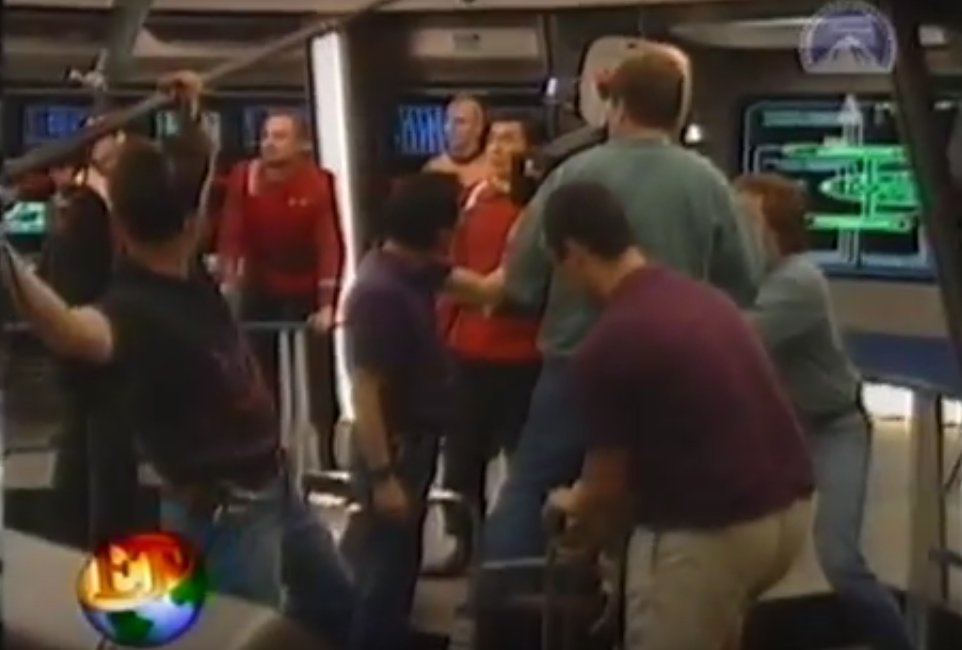
Star Trek: Excelsior, like Star Trek: Discovery, also would deal with the Khitomr Accords and Praxis afternath from the Klingon side. The three classic Klingon characters would also deal with the Albino who has just killed their sons in 2289. Kang (Michael Ansara) would be the 'Ice Man', a calm cool killer who would be working his way toward finding the Albino and killing him. Koloth (William Campbell) was the aristocratic Klingon who sought honourable one-on-one combat to resolve the Albino issue. The Albino cared little for honour. Finally Kor (John Colicos), also from an aristocratic background like Koloth who lost his son and heir and has no means of producing another (perhaps wife dead or through personal injury it is impossible to father a new heir). Kor descends into an alcoholic rage, losing everything in the pursuit of vengeance. ST: Excelsior would freature this story as well, putting a face on the Klingons rather than baddie of the week.
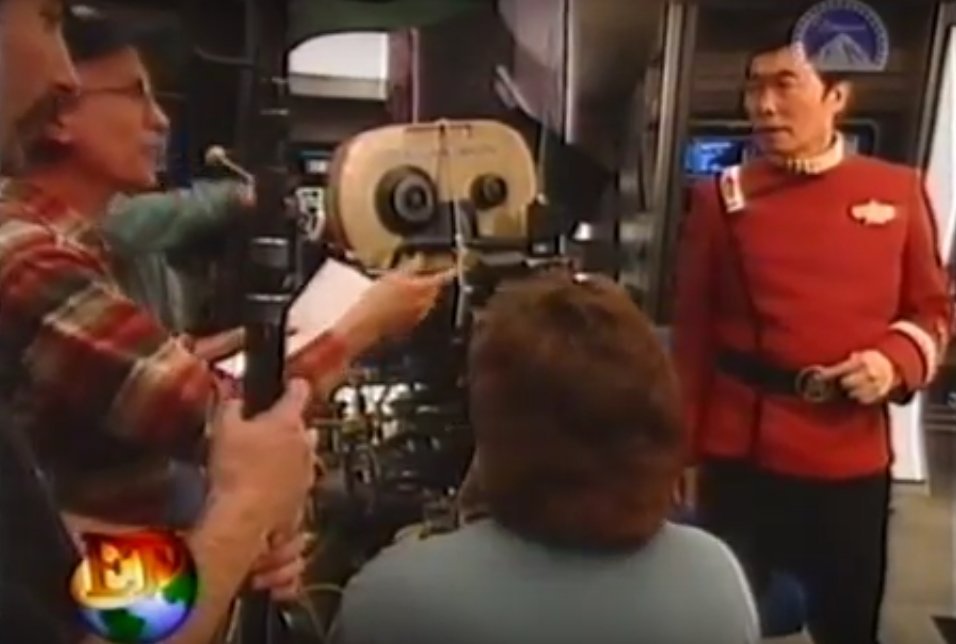
As with Star Trek: Discovery today, Star Trek: Excelsior in the 1990s would have developed the Klingon Empire in more detail than ever before. Storylines about the wars in the fragenting Yugoslavia, Georgia and the 'stans regions helped to inform the colony worlds of the Klingon Empire. Spock talked of the fall of Kronos from the environmental damage of Praxis' explosion, Admiral Cartwright spoke of Klingons becoming the alien trash of the galaxy; ST: Excelsior helped to flesh out how Praxis caused this, that there was political upheaval in the Empire that ran far deeper than was previously known. The Soviet Union-analogy was kept for simplicity and the Empire was depicted as being kept together by fear of Imperial Intelligence and the might of the Red Army-analogous Imperial Klingon Navy. As with the novel "Cast No Shadow" by James Swallow, there are occupied territories and colonies that fight against the oppression of the Klingon Empire. After Gorkon dies and the explosion of Praxis, this is taken as an opportunity to declare independence. Star Trek: Excelsior deals with these colonies and their relationship with the home world, Kronos.
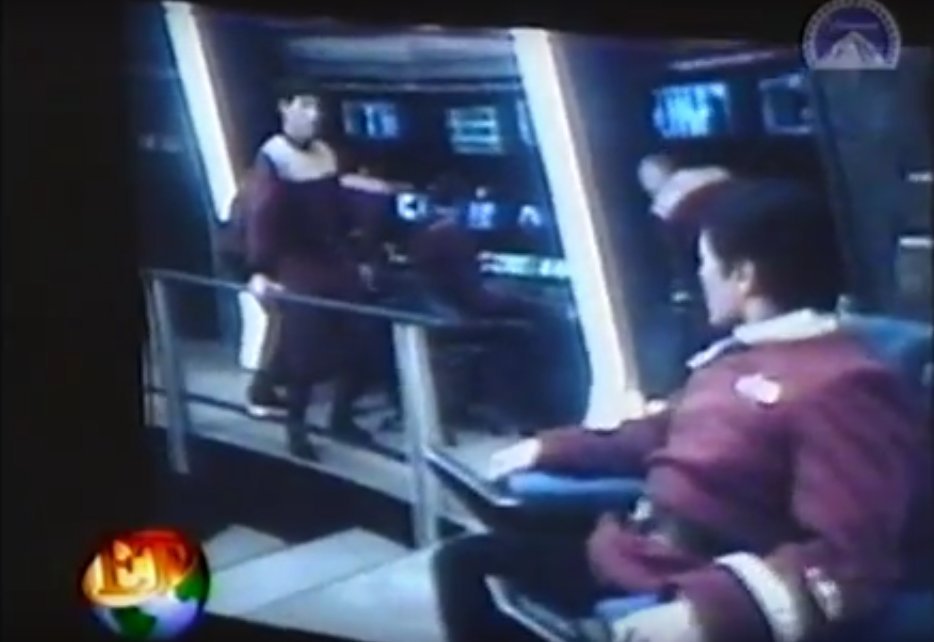
The Klingons would be flavoured by the political developments in the collapsing Soviet empire and former Warsaw Pact. The fear was the Klingons would become the Alien Mercenaries of the Galaxy - a HUGE army for hire with trillions of trained warrior Klingons, with the weapons and the warships to conquer anyone else. As with the former Soviet Pacific Fleet in the 1990s, the Klingon fleet would be more interested in getting resources and materials to better their House, not the Empire that had deserted them. Why serve a weak female who spouted the words of her dead father when you had the mouths of your family to feed? An army that has lost its leadership is at risk of disintergration, drink, drugs and worse. Dreadful weapons that are nuclear, biological and chemical are open for sale to the highest bidder. A Pandora's Box that once open is impossible to close.
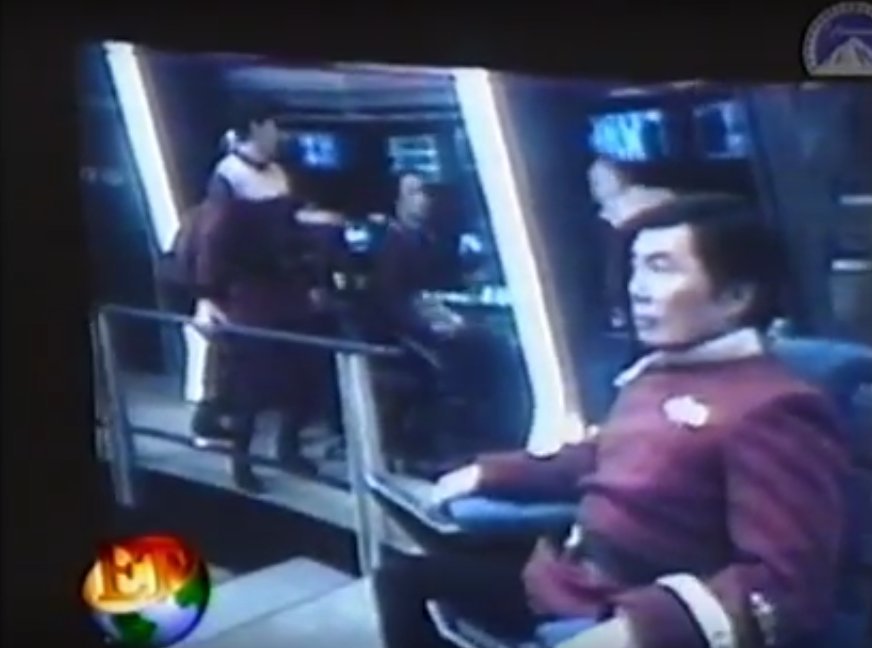
Like the original Star Trek TV series, Star Trek: Excelsior runs for about three to five short seasons of ten episodes, finally coming to the end of its run in the early 2000s. The audience gets a fitting send-off for the original cast of actors, as well as a series that does commentary on a period of change in the world. As Star Trek: Excelsior would have been running in 2001, perhaps there could have been a revival and change in direction about terrorism; the voices and demands of those who'd been ignored, underfoot or used as pawns for the time during the Cold War. Perhaps something that happened in the Star Trek universe as well. In this alternative 1996 - 2000s miniseries, you see how Star Trek: Excelsior would have been a very different beast to my own Interim Years. I regret that we'll never get to see the adventures of the Excelsior; perhaps in a way I can have those adventures here on this website instead...
Building the original Excelsior bridge for Star Trek VI in 1991.
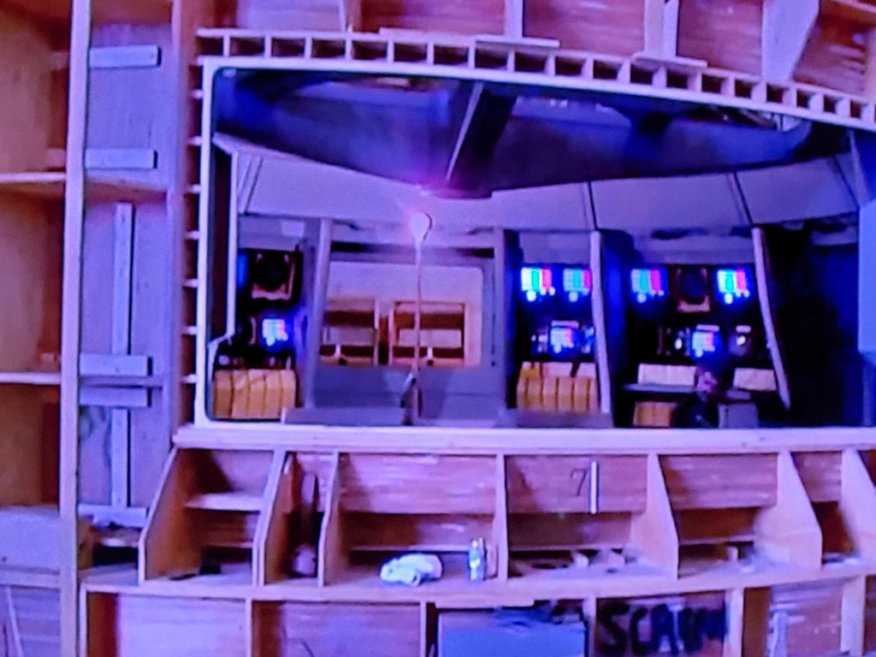
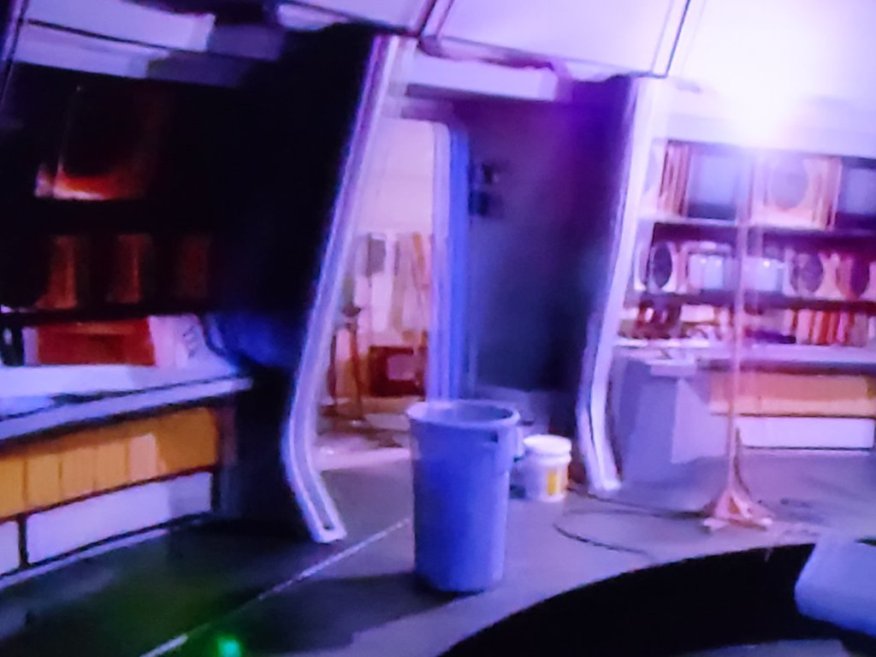
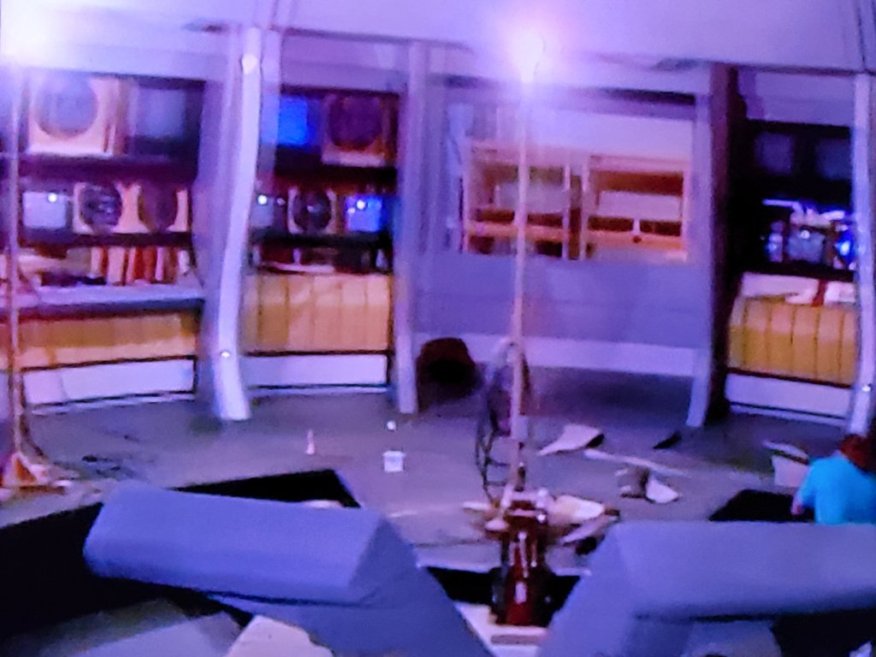
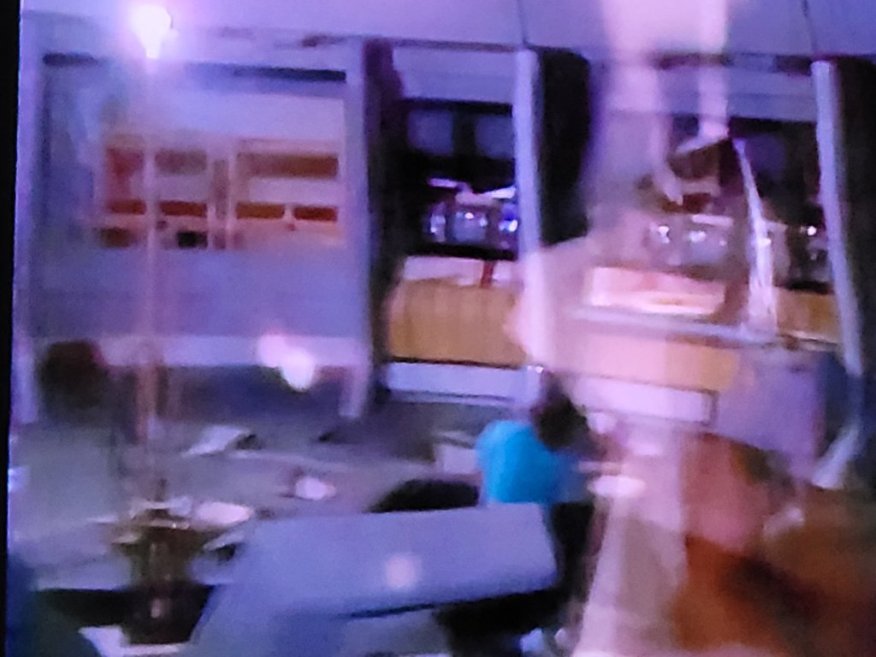
Excelsior Legacy
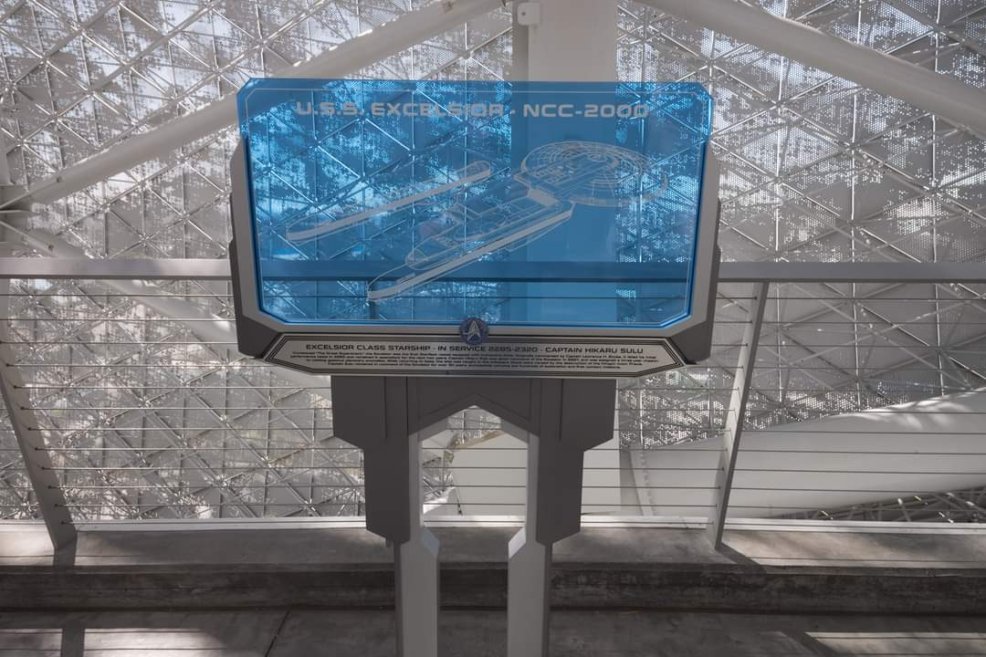
Excelsior image by John Eaves. Text used with consent. From Star Trek: Picard s2.01 The Stargazer.
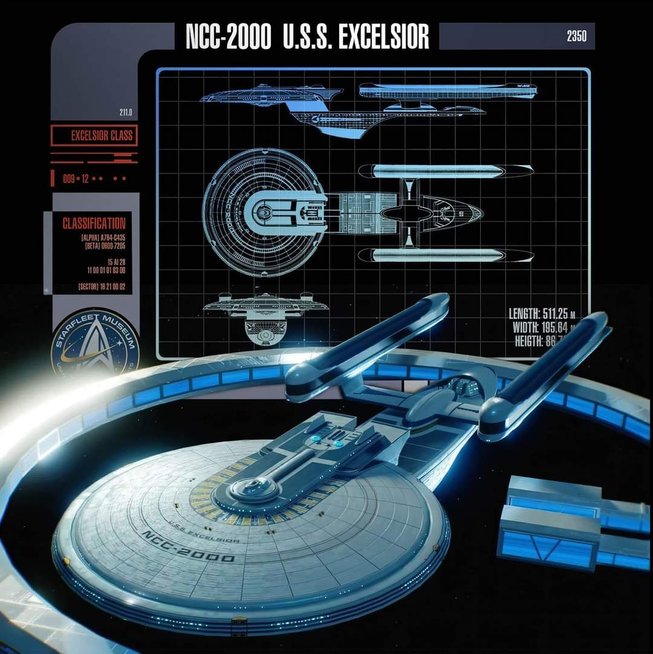
Season 2 and 3 of ST: Picard confirmed that NCC-2000 was commissioned from 2285 to 2320, commanded by Hikaru Sulu from 2287 to 2320. Excelsior was then retired to the Fleet Museum, to join both Enterprise-A and Kronos One to tell the story of the beginning of the peace process with the Klingons. Given her history established in season 3 Picard, if she survives, surely NCC-1777 U.S.S.Titan, Shangri-La class, should also be in the museum?










 U.S.S. Excelsior, launched 2284 and commissioned stardate 8105.5 at San Francisco orbital fleet yards. Test bed for transwarp drive and other systems for five years between 2285 and 2290. Commissioned as a frontline starship on stardate 8921.5, Excelsior has currently undergone two missions [2287 - 90; 2290 - 2293] and is about to start her third mission.
U.S.S. Excelsior, launched 2284 and commissioned stardate 8105.5 at San Francisco orbital fleet yards. Test bed for transwarp drive and other systems for five years between 2285 and 2290. Commissioned as a frontline starship on stardate 8921.5, Excelsior has currently undergone two missions [2287 - 90; 2290 - 2293] and is about to start her third mission.  It didn't take long for the death of Gorkon and the naming of his daughter Azetbur as Chancellor for the Empire to start to crumble. Sulu and the Execelsior crew had met Harcourt Fenton Mudd (junior) working with the Orion Syndicate to bring the blackmarket to the Klingon Empire, as well as selling off some of the products of the Empire for a small profit. The world of Ch'ramak is where the Excelsior had witnessed both the disintergration on the Klingon Empire and the ferocity of the fight-back to save it. It was soon apparent that there was a loss of prestige in the Imperial Klingon Navy as the fragmenting High Council was pulling resources in different directions to both rebuild the home world and also empower rising Houses. The result of this was a Klingon war fleet that couldn't subdue rebelling farmers, who are evolving into something far more dangerous over time. The words of Koloth came back to Sulu as he realised that the explosion of Praxis had exposed a more insidious collapse within the Klingon Empire. Worse was to come. News followed from the Klingon home world; there had been a military coup and Chancellor Azetbur had been overthrown. Probably killed. Her successor was none other than General Koloth.
It didn't take long for the death of Gorkon and the naming of his daughter Azetbur as Chancellor for the Empire to start to crumble. Sulu and the Execelsior crew had met Harcourt Fenton Mudd (junior) working with the Orion Syndicate to bring the blackmarket to the Klingon Empire, as well as selling off some of the products of the Empire for a small profit. The world of Ch'ramak is where the Excelsior had witnessed both the disintergration on the Klingon Empire and the ferocity of the fight-back to save it. It was soon apparent that there was a loss of prestige in the Imperial Klingon Navy as the fragmenting High Council was pulling resources in different directions to both rebuild the home world and also empower rising Houses. The result of this was a Klingon war fleet that couldn't subdue rebelling farmers, who are evolving into something far more dangerous over time. The words of Koloth came back to Sulu as he realised that the explosion of Praxis had exposed a more insidious collapse within the Klingon Empire. Worse was to come. News followed from the Klingon home world; there had been a military coup and Chancellor Azetbur had been overthrown. Probably killed. Her successor was none other than General Koloth.  Star Trek: Excelsior crew: 2287 - 2293:
Star Trek: Excelsior crew: 2287 - 2293: Captain Hikaru Sulu
Captain Hikaru Sulu Captain Saavik
Captain Saavik Kang
Kang For the character of Kor I looked at the opening few minutes of DS9 Blood Oath. Kor is the revered Dahar Master who is now a drunkard. We know also from Martok on DS9 that Kor was on the officer selection panel and thought Martok wasn't worthy of being an officer. I wanted each Klingon to be an archetype and different and Kor was the cruel drunk, drowning the sorrow of losing his (last remaining) son and heir to the Albino. Rather than fighting, he's drinking himself to death. The excessive drinking and lack of honourable combat etc. may be why Kor has no wife present - she left this dishonourable loser to find honour elsewhere. Kor is a morality tale of alcohol destroying a reputation as well as destroying the mind and physique of the man. As he's Klingon, he can tae his booze so still can operate semi-normally when we need him to.
For the character of Kor I looked at the opening few minutes of DS9 Blood Oath. Kor is the revered Dahar Master who is now a drunkard. We know also from Martok on DS9 that Kor was on the officer selection panel and thought Martok wasn't worthy of being an officer. I wanted each Klingon to be an archetype and different and Kor was the cruel drunk, drowning the sorrow of losing his (last remaining) son and heir to the Albino. Rather than fighting, he's drinking himself to death. The excessive drinking and lack of honourable combat etc. may be why Kor has no wife present - she left this dishonourable loser to find honour elsewhere. Kor is a morality tale of alcohol destroying a reputation as well as destroying the mind and physique of the man. As he's Klingon, he can tae his booze so still can operate semi-normally when we need him to.
 Once the coup had collapsed, with the help of Koloth, Azetbur felt that although he had to be punished, death was too severe. Instead she exhiled him from Qo'noS to the monestary at Boreth. There he was to recquaint himself with the works of Kahless and look into his heart. He had lost his way and Azetbur gave him the punishment of finding his true path once more.
Once the coup had collapsed, with the help of Koloth, Azetbur felt that although he had to be punished, death was too severe. Instead she exhiled him from Qo'noS to the monestary at Boreth. There he was to recquaint himself with the works of Kahless and look into his heart. He had lost his way and Azetbur gave him the punishment of finding his true path once more. Primary Hull
Primary Hull


 2.04 – Our Generation – Sulu meets up with Koloth, who's not happy with the Khitomer Accords. The third Klingon archetype: the honourable noble. Koloth is what Kor evolved into in DS9, a noble who was descended from the blood of Kahless. William Campbell came across both in Trouble with Tribbles and Blood Oath as the aristocratic Klingon. The political beast who has connections through blood and his House. He knew Kang and Kor, but also was in with Kesh, Gorkon, Korrd and Chang. Why would he trust humans over these Klingons he's known for years when all Kirk did was put Tribbles onto his ship and humiliated him? The title comes from Gorkon's line "If there is to be a Brave New World, our generation is going to have the hardest time living in it". This story acts as a primer for what happens next...
2.04 – Our Generation – Sulu meets up with Koloth, who's not happy with the Khitomer Accords. The third Klingon archetype: the honourable noble. Koloth is what Kor evolved into in DS9, a noble who was descended from the blood of Kahless. William Campbell came across both in Trouble with Tribbles and Blood Oath as the aristocratic Klingon. The political beast who has connections through blood and his House. He knew Kang and Kor, but also was in with Kesh, Gorkon, Korrd and Chang. Why would he trust humans over these Klingons he's known for years when all Kirk did was put Tribbles onto his ship and humiliated him? The title comes from Gorkon's line "If there is to be a Brave New World, our generation is going to have the hardest time living in it". This story acts as a primer for what happens next...
 Author notes:
Author notes:  Season 3 – 2296
Season 3 – 2296 Author's Notes:
Author's Notes:![Excelsior's bridge [production model 1]](excelbrdg2.jpg)























